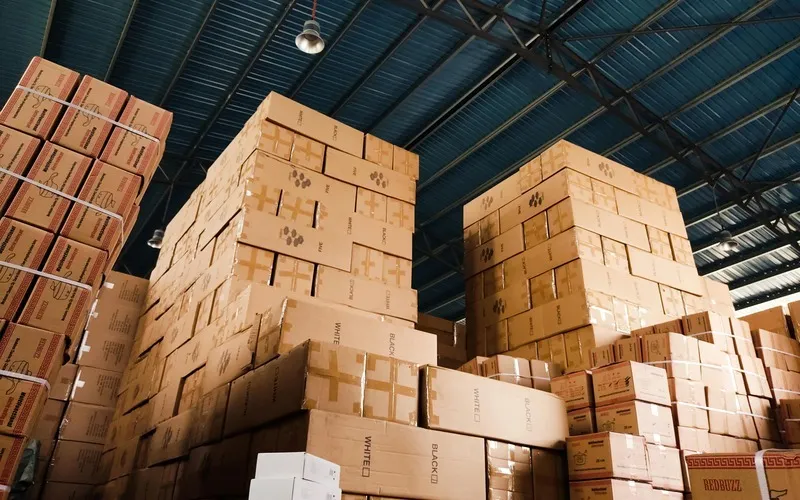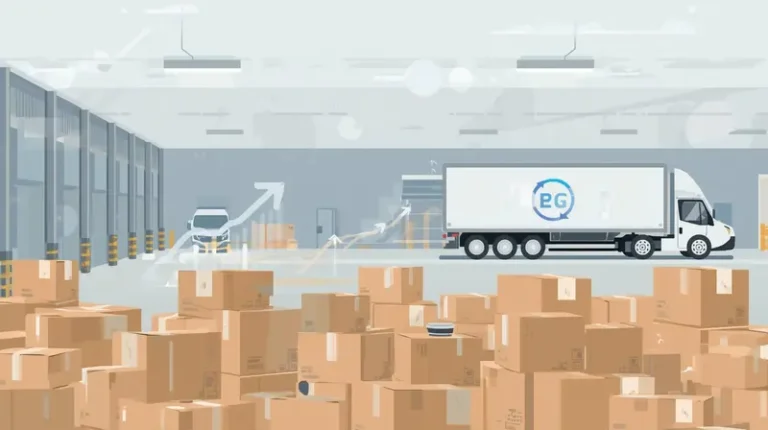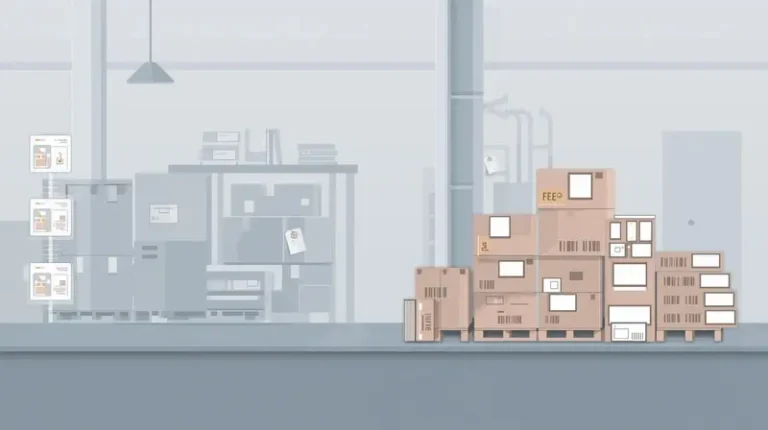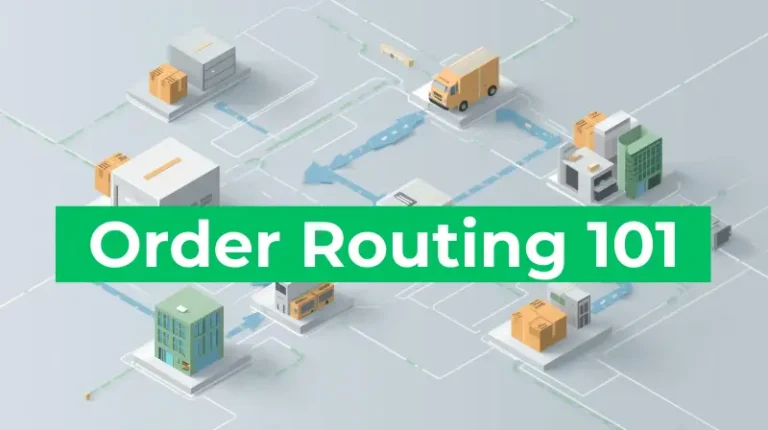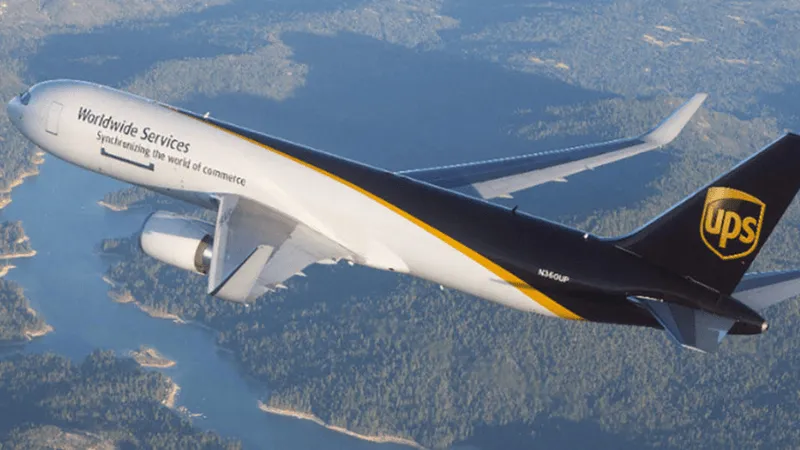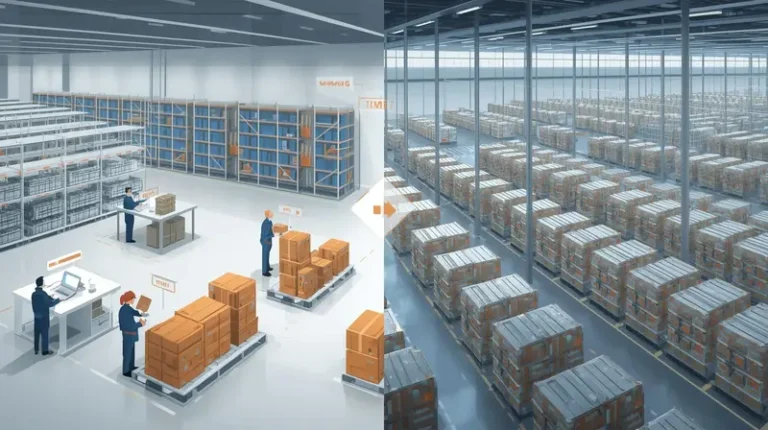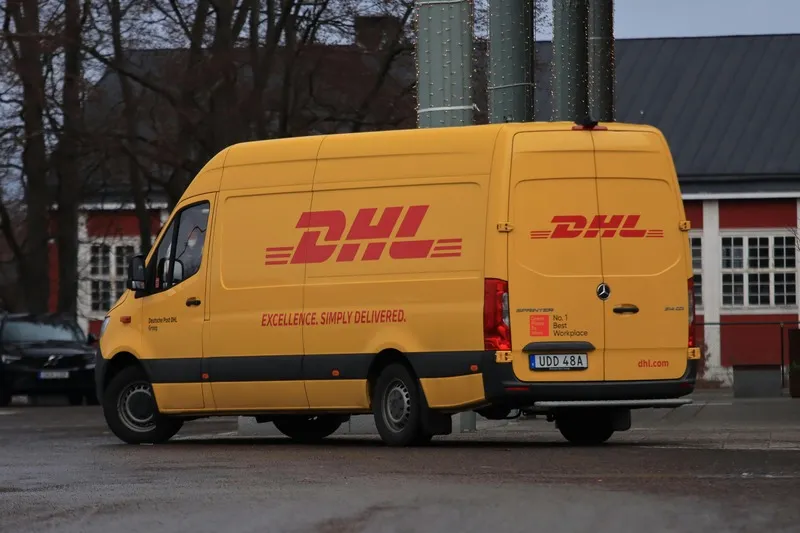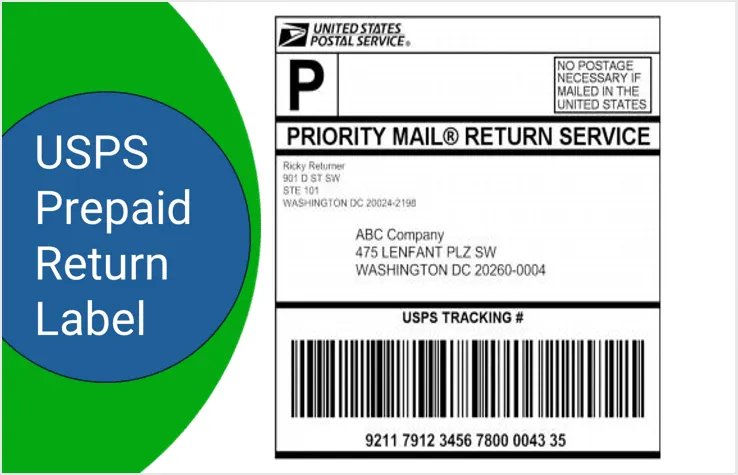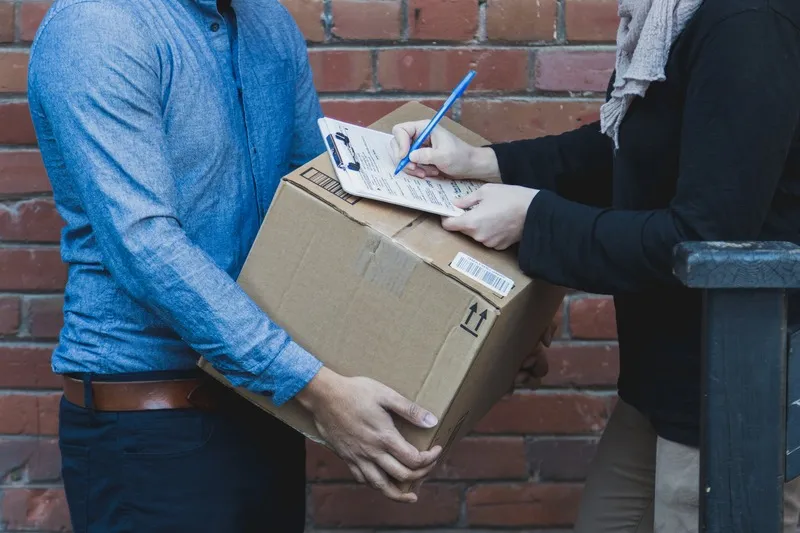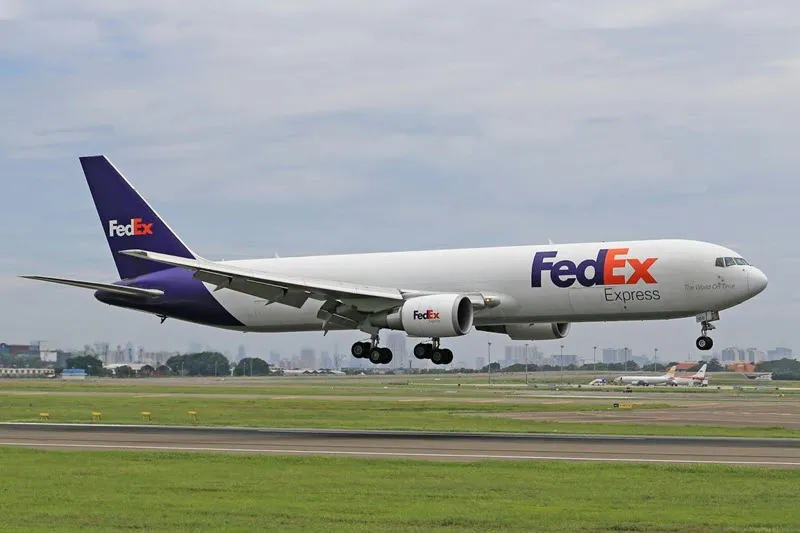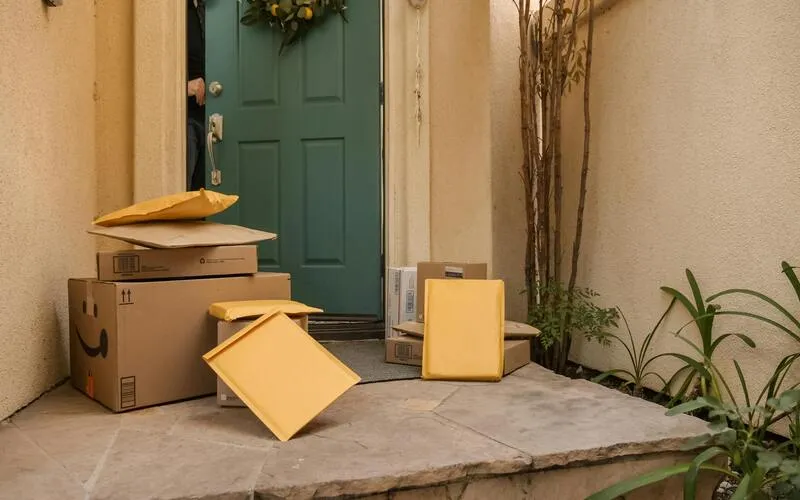Understanding Dimensional Weight Pricing
As ecommerce continues to grow year-over-year, shipping costs remain one of the most critical elements affecting profitability. Dimensional weight pricing, often abbreviated as dim weight, is a crucial concept that every ecommerce business must grasp to avoid overpaying for shipping. This pricing model is designed to account for the space that a package occupies in relation to its actual weight. Whether you are a small business owner or managing logistics for a large ecommerce operation, understanding how dimensional weight works can help streamline your shipping processes and save on costs. In this article, we will break down what dimensional weight is, why carriers use it, and how to manage and minimize its impact on shipping expenses.
What is Dimensional Weight?
Dimensional weight is a pricing technique used by shipping carriers to charge based on the volume of a package rather than its actual weight. In traditional weight-based shipping models, customers pay according to the physical weight of their package. However, this approach doesn’t always account for packages that are large but lightweight—think of a large box filled with foam padding or bubble wrap, but containing only a small item inside. In these cases, the carrier is still using valuable space on their truck or aircraft, and thus, dimensional weight is applied.
To calculate dimensional weight, the carrier will use a formula that considers the dimensions of the package—its length, width, and height. For most carriers, this is usually done by multiplying these three dimensions together to find the volume of the package. That number is then divided by a standard “dimensional factor,” which varies depending on the carrier.
For example, if a box measures 12 inches long, 10 inches wide, and 8 inches tall, the volume would be 960 cubic inches (12 x 10 x 8). The carrier would then divide that number by the dimensional factor (let’s say it’s 139 for domestic ground shipping with FedEx or UPS), which results in a dim weight of 6.9 pounds (rounded up to the nearest pound, so 7 pounds). If the actual weight of the package is 3 pounds, the carrier would charge for the 7-pound dimensional weight instead of the actual weight, since it takes up more space.
Let AI Optimize Your Shipping and Boost Profits
Cahoot.ai software selects the best shipping option for every order—saving you time and money automatically. No Human Required.
See AI in ActionWhy Do Carriers Use Dimensional Weight?
Carriers adopted dimensional weight pricing to more accurately reflect the costs of transporting packages. Shipping is not only about the weight of the package—it’s also about how much space it occupies in a truck or airplane. The more space a package takes up, the less room there is for other packages. For shipping carriers, this means they can carry fewer goods, which ultimately reduces their efficiency and increases costs.
In recent years, the rise of ecommerce has led to an influx of smaller, lightweight items that are packaged in oversized boxes. While these packages are light in weight, they take up considerable space in transportation vehicles. As a result, carriers needed a way to ensure they were being fairly compensated for the space they were losing in favor of these packages. Dimensional weight provides a more accurate measure of the space a package occupies, which helps carriers balance costs, maximize capacity, and avoid inefficiencies.
Additionally, with the increasing popularity of express shipping and global commerce, international shipping has become more complex. In the case of air freight, the cost of moving goods is heavily influenced by the weight-to-space ratio. Shipping carriers must account for both weight and volume when determining prices to remain competitive while covering their expenses. Dimensional weight ensures that carriers are not subsidizing the cost of lighter, bulkier packages, which is crucial for maintaining profitability in a highly competitive and resource-intensive industry.
The Importance of the DIM Factor
The “DIM factor” is a crucial element in dimensional weight pricing. This factor represents the “expected” ratio of a package’s volume (in cubic inches) to its weight. It plays a vital role in determining the dimensional weight of a package, and its value can vary depending on the carrier and the mode of transportation (ground, air, etc.). The DIM factor is a multiplier that converts the volume of the package into a weight equivalent. A lower DIM factor means that less volume per pound is “expected,” resulting in a higher dimensional weight, while a higher DIM factor leads to a lower dimensional weight for the same package.
Understanding the DIM factor is essential for ecommerce shippers because it allows them to better estimate shipping costs. As indicated above, different carriers may use different DIM factors, and knowing these differences can help make more informed decisions about which carrier to choose for a specific shipment. Additionally, some carriers may update their DIM factors periodically, so it’s important to stay informed about any changes to ensure you’re not caught off guard by unexpected cost increases.
Carriers can offer different DIM factors depending on the type of shipment. For example, express and international shipments might have a different DIM factor compared to standard ground shipping. This variation in the DIM factor means that dimensional weight can affect the total cost of shipping depending on how quickly the package needs to reach its destination and the method of transport being used.
Differences in DIM Factors Among Carriers and 3PLs
Different shipping carriers use slightly varied dimensional weight (DIM) calculation methods, primarily by adjusting the DIM factor, which influences how volume converts to weight. For example:
- FedEx, DHL, and UPS generally use a DIM factor of 139 for ground shipments within the U.S.
- USPS uses a factor of 166.
Additionally, different DIM factors may be used for air as opposed to ground shipments. This means that the same package might be billed at different rates depending on which carrier is used, making it crucial for shippers to compare options before selecting a service.
Some carriers also offer customized DIM factors for high-volume shippers or businesses that negotiate specific contracts. Additionally, certain services, such as USPS Priority Mail, do not apply dimensional weight pricing unless the package exceeds a particular size threshold (e.g., one cubic foot for domestic shipments). Understanding these variations can help ecommerce businesses strategically choose carriers and optimize packaging to minimize shipping costs.
In addition to differences in DIM factors among carriers, various 3PL services may use differing DIM factors when assessing fulfillment or inventory removal fees. Just as carriers use different DIM factors when calculating rates for different kinds of shipments, 3PLs may use different factors for domestic as opposed to international shipments, or for specific product classes. Be sure to confirm the DIM factors used by any 3PL service, including FBA, to accurately forecast shipping and fulfillment costs.
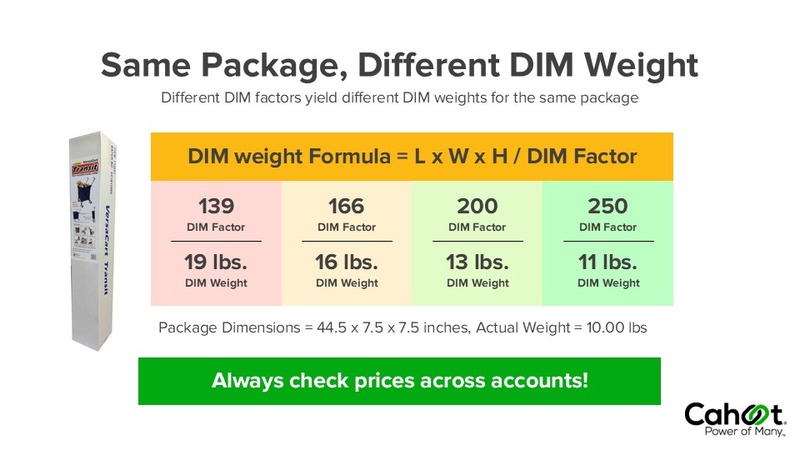
How to Minimize Dimensional Weight Costs
While dimensional weight pricing is a reality that ecommerce shippers must navigate, there are several strategies that can help minimize the associated costs. Here are some practical tips for reducing the financial impact of dimensional weight:
- Optimize Packaging: One of the most effective ways to reduce dimensional weight charges is to carefully consider the packaging you use. Shipping products in unnecessarily large boxes is a common mistake that results in higher shipping costs. Choose packaging that fits the product as closely as possible without wasting space. Nowadays, there is cartonization software that helps you decide what package to use to minimize excess space. If you can’t, you may also want to explore packaging materials like air pillows or foam inserts that can better protect your products while minimizing wasted space.
- Use Custom Packaging: If you consistently ship products that have irregular shapes or sizes, investing in custom packaging could be a smart move. Custom packaging allows you to reduce empty space within the box, which will help lower the dimensional weight.
- Consolidate Shipments: For businesses that ship multiple items, consolidating shipments into fewer packages can help lower dimensional weight charges. Instead of sending each item individually, combine them into a larger, more efficient package. This strategy helps spread out the dimensional weight across multiple products, reducing the overall cost of shipping.
- Take Advantage of Volumetric Pricing: Some carriers offer volume discounts or reduced dimensional weight charges for larger or heavier shipments. If you regularly ship large volumes, consider negotiating with carriers for better rates based on your shipment sizes. Shipping in bulk or negotiating long-term contracts with carriers can also provide discounts on dimensional weight charges.
- Compare Carrier Rates: As we’ve discussed, the DIM factor used can vary between carriers or between services for a given carrier. The exact same package can be billed as 18 pounds in one carrier account and 35 pounds in another. Therefore, it’s important to compare rates from different carriers to see who offers the most cost-effective pricing based on your packages’ size and weight.
- Monitor Your Shipments: Consistently tracking your shipping costs and reviewing your packaging practices can lead to ongoing savings. If you notice that certain shipments are disproportionately affected by dimensional weight pricing, reassess your packaging and look for ways to reduce the dimensions of those shipments.
- Choose the Right Service: When selecting a shipping method, choose the one that best fits the size and weight of your package. Ground shipping, for example, often has different dimensional weight rules than air freight, and express services can come with higher fees due to the faster delivery time. Take time to analyze your options before committing to a particular service.
ShipStation vs. Cahoot: 21x Faster, Real Results
Get the inside scoop on how a leading merchant switched from ShipStation to Cahoot—and what happened next. See it to believe it!
See the 21x DifferenceConclusion
Dimensional weight pricing is a necessary part of modern shipping, particularly for ecommerce businesses that regularly ship lightweight but bulky packages. Understanding dimensional weight, the importance of the DIM factor, and how to minimize costs can significantly improve your bottom line. By optimizing packaging, choosing the right carrier, and staying informed about changes in pricing, you can effectively navigate dimensional weight charges and keep your shipping expenses in check. In the competitive world of ecommerce, small adjustments to your shipping strategy can lead to big savings, ultimately helping you offer more competitive pricing and enhancing your customers’ satisfaction.
Fortunately, Cahoot is here to help. Our state-of-the-art shipping software is able to integrate across all major sales channels and compares rates across carriers to automatically select the most cost-effective options to meet your delivery requirements. Our nationwide network of warehouses ensures that, whatever your product and wherever your customer base, we are able to accommodate your specific fulfillment needs. Our proven solutions can help small businesses scale into established players, provide needed savings to sellers seeking to remain competitive, or find the best shipping solutions for bulky or hard-to-ship products. Whatever blockers are keeping your business from reaching its potential, Cahoot is here to help.
Frequently Asked Questions
Why is dimensional weight used by carriers?
Dimensional weight is used to account for the space taken up by a package as well as its weight. This kind of pricing has long been used for services like air freight, where space is at a premium and must be accounted for. With the explosion of ecommerce in the late 2000s and early 2010s, the major carriers began to apply dimensional weight pricing to ground shipments around 2015, to ensure that limited space in freight and delivery trucks is used efficiently.
Why do DIM factors differ between carriers or services?
Different carriers use varying DIM factors to align their pricing models with their specific operational costs, transportation methods, and target markets. The DIM factor represents the volume that equates to one pound of billable weight, and adjusting the factor allows carriers to balance space utilization and profitability. A lower DIM factor results in a higher dimensional weight, meaning shippers are charged more for bulky but lightweight packages. Conversely, a higher DIM factor allows for more generous volume-to-weight conversions, reducing costs for shippers.

Turn Returns Into New Revenue
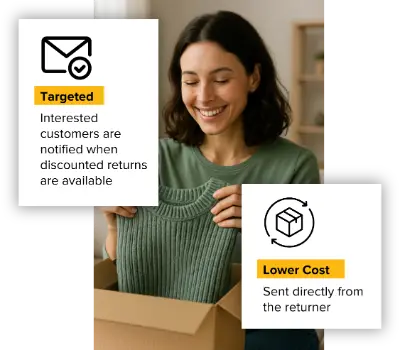
UPS Next Day Air Saver: Delivery Times, Costs & When to Use It
In this article
 6 minutes
6 minutes
- Key Takeaways
- What Is UPS Next Day Air Saver?
- UPS Next Day Air Saver vs Other UPS Services
- Delivery Times and Guarantees
- Shipping Costs and Rates
- Weight and Size Limits
- Signature Requirements
- Service Coverage Areas
- Scheduling and Pickup
- Why Ecommerce Businesses Choose UPS Next Day Air Saver
- When to Choose UPS Next Day Air Saver
- Tips to Maximize Savings
- Final Thoughts
- Frequently Asked Questions
Key Takeaways
- UPS Next Day Air Saver offers fast, overnight shipping at a lower cost than standard Next Day Air, making it ideal for urgent deliveries.
- Delivery is guaranteed by the end of the day for residential addresses, with potential money-back guarantees for late shipments, providing reliability for businesses.
- The service accommodates packages up to 150 pounds and offers substantial savings for regular shippers, benefiting industries like ecommerce, legal, and medical fields.
What Is UPS Next Day Air Saver?
UPS Next Day Air Saver is a next-day air service from UPS that guarantees packages will be delivered by the end of the next business day. It’s similar to regular UPS Next Day Air, but more affordable, with delivery typically by 3:00 PM to commercial addresses and end-of-day for residential addresses.
You still get timely delivery, tracking, and access to express shipping options, just with slightly later arrival times, ideal for businesses that want to leverage UPS without paying premium rates.
Slash Your Fulfillment Costs by Up to 30%
Cut shipping expenses by 30% and boost profit with Cahoot's AI-optimized fulfillment services and modern tech —no overheads and no humans required!
I'm Interested in Saving Time and MoneyUPS Next Day Air Saver vs Other UPS Services
Here’s a snapshot comparison of UPS Next Day Air Saver with other popular UPS expedited services:
|
Service
|
Delivery Time
|
Coverage
|
Saturday Delivery
|
Typical Use Case
|
|---|---|---|---|---|
|
UPS Next Day Air
|
By 10:30 AM
(most locations) |
All 50 states
|
Optional with fee
|
Highest-priority packages needing early delivery
|
|
UPS Next Day Air Saver
|
By 3:00 PM (commercial)
End-of-day (residential) |
48 contiguous states + limited AK/HI
|
Optional with fee
(metro only) |
Cost-effective next-day delivery for ecommerce and businesses
|
|
UPS 2nd Day Air
|
By the end of the 2nd business day
|
All 50 states
|
Optional with fee
|
Less urgent packages that can wait a day
|
Note: UPS Next Day Air Saver is not available in areas where guaranteed morning delivery (UPS Next Day Air Early) is already promised by other UPS services.
Delivery Times and Guarantees
For commercial addresses, delivery speed for UPS Next Day Air Saver is guaranteed by 3:00 PM; however, UPS now uses zone-based time windows, so in some metro areas, Air Saver commercial deliveries may be later than 3:00 PM. For residential addresses, packages arrive by the end of the business day (“end-of-day” is typically defined as 7:00 PM, but deliveries have been known to deliver after 11 PM local time in some cases). These guaranteed delivery times make it a strong alternative to pricier services like UPS Next Day Air Early AM.
UPS may offer a money-back guarantee for late deliveries on eligible shipments, though coverage varies by zone, season, and contract. You’ll want to confirm this on the UPS website or contact UPS customer service if timing is critical.
Shipping Costs and Rates
The next-day air saver cost depends on multiple variables:
- Package’s weight
- Dimensions (dimensional weight may apply)
- Origin and destination
- Chosen shipping methods and optional services
Businesses often see cost savings of $2.95 to $10.23 per shipment versus standard Next Day Air rates, depending on weight, zone, and contract rates. That makes the next-day air saver package a favorite for ecommerce shipping and bulk senders.
Here’s an illustrative example from the current UPS Rate and Service Guide. These rates assume actual weight (not dimensional weight), with no declared value, accessorials, or Saturday delivery. Important caveats: Rates vary by account volume, service tier, fuel surcharge, and peak-season surcharges. Always confirm pricing with your UPS rep or shipping software.
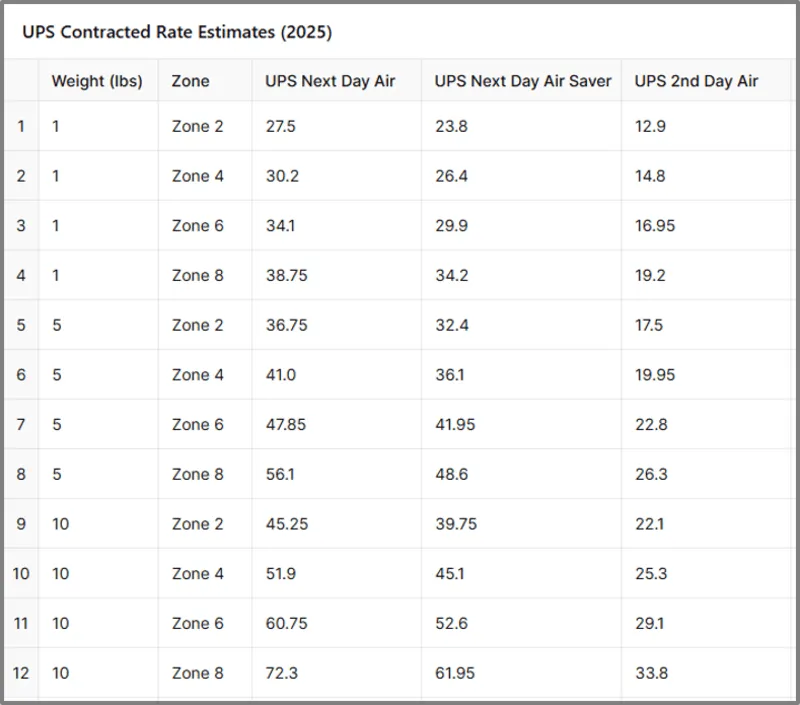
Weight and Size Limits
- Maximum weight limit: 150 lbs per package
- Max size: 108 inches in length, or 165 inches in combined length + girth
Exceeding these limits can require freight classification or other UPS services.
Looking for a New 3PL? Start with this Free RFP Template
Cut weeks off your selection process. Avoid pitfalls. Get the only 3PL RFP checklist built for ecommerce brands, absolutely free.
Get My Free 3PL RFPSignature Requirements
- Commercial address: Signature is required for delivery
- Residential addresses: No signature required unless requested
This flexibility balances customer expectations with security and speed.
Service Coverage Areas
UPS Next Day Air Saver is available across the 48 contiguous states, with limited availability in Alaska and Hawaii. It’s not available in areas already covered by guaranteed morning delivery under UPS Next Day Air Early.
International shipments require separate UPS Express shipping services.
Scheduling and Pickup
- Cutoff times: Typically 4:00 PM to 6:00 PM local time
- Can specify pickup windows and reference numbers
- Missed pickups can be rescheduled via your UPS account
UPS also supports Saturday delivery for Air Saver shipments, but not by default. Saturday delivery for Air Saver is only available in limited metro areas, and often requires an upgrade to Next Day Air or an additional surcharge.
Why Ecommerce Businesses Choose UPS Next Day Air Saver

If you’re shipping high volumes or dealing with customer demands for one-day delivery, UPS Next Day Air Saver is the best compromise between fast delivery and affordable shipping.
Industries that benefit:
- Ecommerce & DTC brands
- Medical and pharmaceutical shipping
- Legal and financial services
Using Air Saver helps brands:
- Meet customer expectations for speed
- Reduce shipping charges while maintaining quality
- Handle urgent shipments reliably
- Boost sales with competitive delivery options
When to Choose UPS Next Day Air Saver
- You want overnight shipping but don’t need early AM delivery
- You’re sending to commercial addresses where 3 PM is sufficient
- You’re balancing shipping speed and budget
- You’re optimizing shipping costs during peak ecommerce cycles
Use UPS Next Day Air Saver when:
Scale Faster with the World’s First Peer-to-Peer Fulfillment Network
Tap into a nationwide network of high-performance partner warehouses — expand capacity, cut shipping costs, and reach customers 1–2 days faster.
Explore Fulfillment NetworkTips to Maximize Savings
- Set a free shipping threshold to increase cart size
- Choose next-day air saver shipping only for qualifying zones and weights
- Compare against UPS 2nd Day Air and standard Next Day Air rates weekly
- Revisit contract discounts quarterly with your UPS rep
- Combine with third-party shipping options or rate shopping tools to reduce waste
Final Thoughts
UPS Next Day Air Saver gives ecommerce brands, shippers, and logistics managers a powerful way to get packages delivered quickly without overspending. It’s a proven method to meet customer expectations, reduce costs, and protect margins, especially when delivery times are important, but guaranteed morning delivery isn’t necessary.
Want more strategies to lower your shipping costs and improve fulfillment? Explore Cahoot’s distributed order fulfillment solutions built for fast, affordable delivery across all major carriers.
Frequently Asked Questions
What is UPS Next Day Air Saver?
A UPS overnight delivery service that guarantees next-day delivery by end of business day at lower rates than standard Next Day Air.
How does UPS Next Day Air Saver differ from Next Day Air?
Next Day Air arrives by 10:30 AM; Air Saver by 3:00 PM (commercial) or end-of-day (residential). Air Saver is more affordable.
Does UPS Next Day Air Saver support Saturday delivery?
Yes, but only in select metro areas and for an added fee.
Are there weight and size limits for UPS Next Day Air Saver?
Packages can weigh up to 150 lbs and be up to 165 inches in length + girth.
Where is UPS Next Day Air Saver available?
It serves the 48 contiguous U.S. states and some areas in AK/HI, except where guaranteed morning delivery supersedes it.

Turn Returns Into New Revenue

What is DHL eCommerce and Why It’s Important for Online Sellers
In this article
 12 minutes
12 minutes
- Key Takeaways
- DHL eCommerce: An Overview
- Affordable Shipping Solutions
- Domestic Shipping Services
- International Shipping Options
- Hybrid Delivery Model
- Integration with Ecommerce Platforms
- Real-Time Tracking and Transparency
- Operational Pitfalls
- What They Don’t Tell You: Hidden Costs in DHL’s Latest Rate Hike
- Customs and Trade Considerations
- Sustainability Initiatives
- Checklist for Sellers
- Summary
- Frequently Asked Questions
DHL eCommerce provides shipping solutions for online businesses worldwide. Learn about its services, benefits, and how it can improve your shipping process.
Key Takeaways
- DHL eCommerce offers affordable and scalable shipping solutions, making it suitable for businesses of all sizes, with no minimum volume requirements.
- The company provides fast domestic shipping options, with services like Expedited Max averaging delivery in just 2 – 3 days.
- Commitment to sustainability is a key focus for DHL eCommerce, as they aim for net-zero emissions by 2050 through their GoGreen program.
DHL eCommerce: An Overview
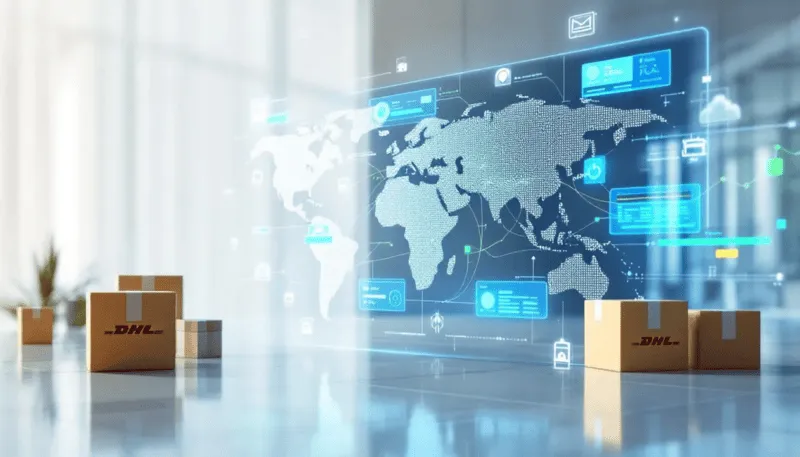
DHL eCommerce is a division of Deutsche Post DHL Group, specializing in domestic and international shipping solutions for ecommerce merchants around the world. With operations in over 220 countries and territories, DHL eCommerce shipments provide extensive global reach, making it a reliable partner for businesses looking to expand their market presence.
The company employs over 45,000 specialists focused on ecommerce logistics, ensuring that your shipments are handled by experienced professionals. DHL eCommerce offers services for ecommerce businesses, marketplaces, and B2B shippers, helping them manage their logistics effectively as a logistics company. This makes it an ideal choice for businesses of all sizes, from small startups to large enterprises.
Sustainability is also a key focus for DHL eCommerce, aligning with green logistics goals to promote environmentally friendly practices. Partnering with DHL eCommerce allows businesses to grow and meet changing demands while contributing to a more sustainable future.
Slash Your Fulfillment Costs by Up to 30%
Cut shipping expenses by 30% and boost profit with Cahoot's AI-optimized fulfillment services and modern tech —no overheads and no humans required!
I'm Interested in Saving Time and MoneyAffordable Shipping Solutions
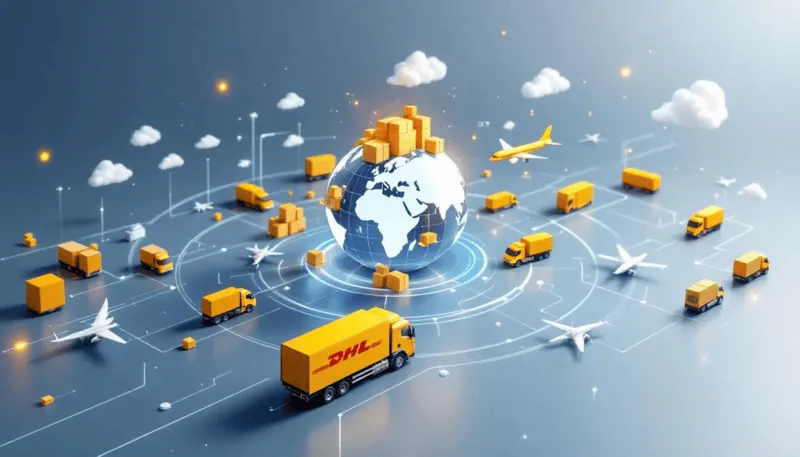
One of the standout features of DHL eCommerce is its affordability, particularly for international parcels. While rates vary based on size, weight, and service level, many ecommerce sellers report that DHL eCommerce often provides lower-cost options compared to USPS for similar cross-border shipments. For example, shipping a lightweight package from the U.S. to the UK can be significantly cheaper through DHL’s Parcel International Direct service compared to USPS Priority Mail International. This price advantage makes DHL eCommerce a compelling choice for businesses seeking cost-effective international delivery without compromising global reach.
DHL eCommerce offers:
- Scalable pricing models that adjust based on order volume, allowing businesses to save on costs as more shipments are processed.
- No minimum volume requirements, making DHL accessible for businesses of varying sizes. But note that ultra-low tier pricing is only available to high-volume shippers (e.g., 1,500+ packages per month).
- A transparent pricing structure that factors in both weight and dimensions, ensuring that you know exactly what you’re paying for.
DHL eCommerce offers competitive pricing for lightweight packages by consolidating and pre-sorting shipments, reducing costs and simplifying the shipping process. With its global network and partnerships with various carriers, DHL eCommerce makes it easy for businesses to expand their reach and deliver packages efficiently.
For example, a Brooklyn-based apparel brand shipping lightweight t-shirts to customers in California saved nearly 35% on each DHL eCommerce shipment compared to USPS Ground Advantage. By using DHL’s scalable pricing and consolidating shipments during peak sale periods, they optimized both cost and delivery accuracy, while avoiding common USPS delays.
Domestic Shipping Services
DHL eCommerce offers a range of domestic shipping services to cater to different needs. One of the popular specific services is the Expedited Max service, which ensures faster deliveries with an average postal time of just 2 – 3 days. The Ground shipping service averages 3 – 8 days for delivery, suitable for less time-sensitive shipments.
Another notable service is the SmartMail Parcel, designed for packages weighing up to 25 lbs. This service allows for a maximum shipment value protection of up to $100, providing peace of mind for valuable items.
DHL eCommerce delivery times can range from 2 to 8 business days for domestic shipments within the United States, making it a versatile option for various shipping needs. These options allow businesses to tailor their shipping strategies to meet customer expectations and ensure timely deliveries, whether expedited or more cost-effective ground shipping is needed.
A popular DTC skincare brand uses Expedited Max for its starter kits under 1 lb—ensuring delivery in 2 – 3 days—while heavier bottles are shipped via Ground to keep shipping costs down. This dual strategy lets them meet shopper expectations on speed while preserving margin.
International Shipping Options
DHL ecommerce services comparison table.

DHL eCommerce provides robust international shipping solutions for businesses aiming to expand globally. The DHL Parcel International Direct service offers:
- Coverage of 37 important ecommerce markets
- Shipping times range from 3 to 10 business days
- Options for duty paid in advance or upon delivery, simplifying the customs process for businesses
The Parcel International Standard service delivers to over 220 countries and territories, with transit times of 4 to 8 business days for Europe and Canada, and 8 to 14 days for the rest of the world. This service is ideal for businesses looking to reach a wider audience without breaking the bank.
For smaller parcels under 4.4 lbs, DHL Packet International offers a cost-effective solution with expected delivery times of 4 to 8 business days. These options enable businesses to select the most suitable service based on shipping needs and destination country, ensuring timely and efficient deliveries worldwide.
However, brands shipping to the UK or Canada should closely monitor customs documentation. One merchant selling tech accessories saw delays of up to 7 days due to missing HS codes on shipping labels, a preventable issue that impacted their ability to confirm delivery dates and caused complaints from international shoppers.
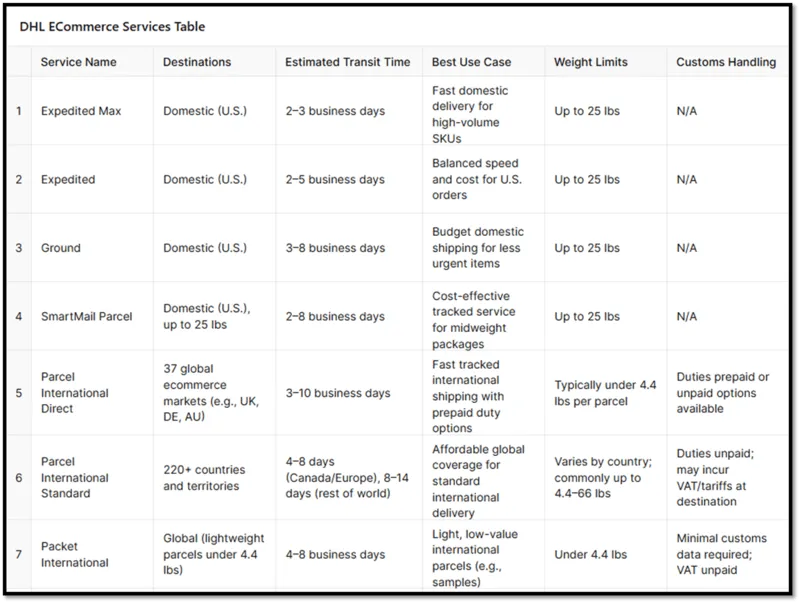
Looking for a New 3PL? Start with this Free RFP Template
Cut weeks off your selection process. Avoid pitfalls. Get the only 3PL RFP checklist built for ecommerce brands, absolutely free.
Get My Free 3PL RFPHybrid Delivery Model
DHL eCommerce employs a hybrid delivery model that combines the strengths of DHL and USPS. In this model, DHL manages upstream logistics, including sorting and processing packages at distribution centers, then transfers them to USPS for last-mile delivery.
This collaboration allows DHL eCommerce to offer economical shipping solutions while ensuring reliable last-mile service through USPS. However, reliance on USPS can lead to service variability across regions, which businesses should keep in mind when planning their shipping strategies.
For example, a Texas-based seller noticed consistent delays in rural New England ZIP codes when DHL hands off to USPS. To mitigate this, they adjusted cut-off times and proactively updated customers with tracking links to manage expectations, a tactic that helped reduce customer service tickets by 18%.
Integration with Ecommerce Platforms
DHL eCommerce seamlessly integrates with all major ecommerce platforms, making it easier for businesses to manage their shipping operations. Key features include:
- Marketplace sellers can connect their accounts for a streamlined shipping experience.
- Simplified parcel delivery and returns.
- Real-time rate retrieval for shipments, improving efficiency and accuracy in pricing.
The 1-call buys feature simplifies the shipping label purchase process, accelerating operations and helping businesses grow. By connecting with platforms like Shopify, Pulse Commerce, and BigCommerce, DHL eCommerce ensures that businesses can manage their orders and shipments with ease.
Real-Time Tracking and Transparency
Transparency is key in the shipping process, and DHL eCommerce excels in providing real-time tracking for shipments. Key features include:
- The Delivery Confirmation Service offers tracking from the sender to the recipient.
- Ensures visibility throughout the shipping journey, providing important details.
- Particularly beneficial for international shipments, where comprehensive tracking is crucial.
DHL eCommerce utilizes advanced technologies and features to enhance shipment tracking.
- Uses GPS and RFID to provide accurate real-time updates on the location of shipments.
- Minimizes human error and enhances automation in tracking parcels.
- Sends proactive notifications to customers regarding any delays or issues during the shipping process, improving their overall experience.
With various tracking solutions, such as API and On-Demand Delivery options, DHL eCommerce caters to diverse business needs, ensuring that both merchants and consumers have access to reliable tracking information.
Operational Pitfalls
While DHL eCommerce offers numerous benefits, there are also operational challenges to be aware of. Many sellers experience tracking delays, particularly during peak shipping seasons, which can lead to customer dissatisfaction. Inadequate communication with logistics partners and the shipper can exacerbate these issues, leading to unforeseen delays in order fulfillment.
Disruptions in supply chains can significantly impact shipping timelines for DHL eCommerce users. Additionally, certain SKUs, particularly those containing hazardous materials, cannot be shipped through DHL eCommerce, making compliance essential. Establishing clear guidelines for unacceptable shipment types is crucial for avoiding pitfalls and ensuring smooth operations.
A seller in the supplements category learned this the hard way when a batch of shipments containing hemp-based products was flagged during transit. Despite full compliance on the origin country side, destination country regulations caused parcel returns and spam-level customer support volume. Lesson learned: Review restricted items by both carrier and country before you ship.
DHL eCommerce’s tracking updates depend on timely USPS tracking event updates, making it important for sellers to monitor these closely. By being proactive and aware of these potential challenges, businesses can gain valuable insights to better navigate the complexities of using DHL eCommerce for their shipping needs.
What They Don’t Tell You: Hidden Costs in DHL’s Latest Rate Hike
If you blinked, you might’ve missed it, but DHL quietly implemented another round of rate increases in July 2025. While smaller than the dramatic spike that took effect in January, these new rates still chip away at the cost advantage many merchants once counted on.
Let’s break it down.
In early 2024, DHL was one of the most affordable shipping options for lightweight parcels, especially in Zones 1 and 2. Fast forward to July 2025, and that edge is eroding. Rates for 1 – 5 oz parcels in Zones 1 & 2 have climbed significantly—often by $0.10 to $0.20 per package. That might sound negligible, but if you’re shipping 10,000 orders per month, that’s a $1,000–$2,000 hit to your bottom line.
What most merchants miss:
- Price creep is consistent across all weight breaks. The increases are small but relentless.
- The biggest relative jumps are at the lightest weights (1 – 3 oz), a core volume segment for ecommerce.
- Zone compression no longer delivers the savings it used to. Previously, you could count on Zones 1 & 2 to be reliably cheap. Now, even “local” deliveries are being repriced to match broader zone costs.
This isn’t just a DHL issue. It’s the downstream effect of new USPS pricing agreements that have reshaped how DHL and other consolidators structure their pricing tiers. In short: the margins are tighter, and their flexibility is fading.
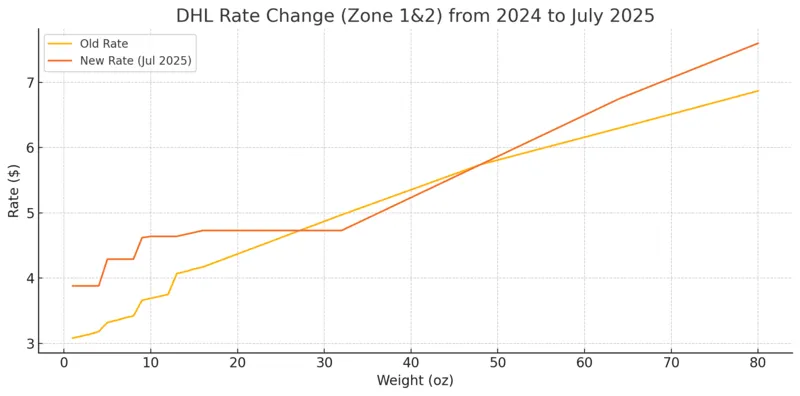
Customs and Trade Considerations
International shipping involves navigating complex customs and trade regulations. DHL eCommerce provides options for customs clearance, letting businesses choose between prepaid or unpaid duties, thus streamlining international shipping processes and avoiding unexpected costs.
Changes in U.S. tariffs do not apply to shipments that have already left their origin, and no current exemptions exist for small businesses regarding tariffs. This situation has created challenges for many businesses who are advised to explore existing trade agreements to obtain tariff impacts and stay informed about changing trade regulations to help their business grow.
Sustainability Initiatives
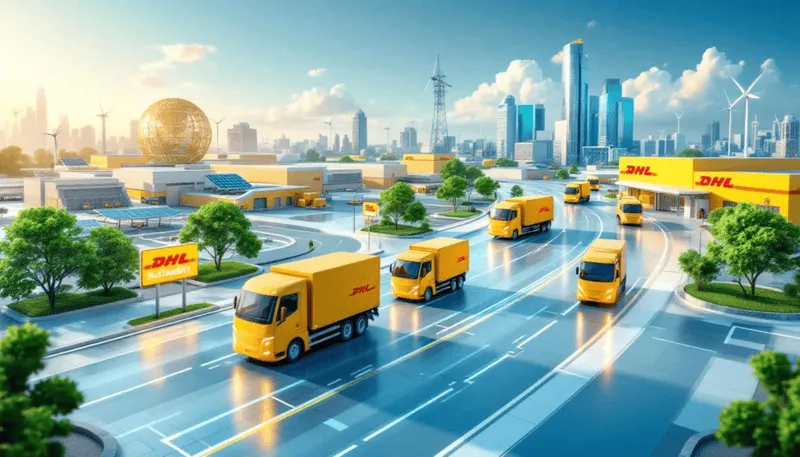
DHL eCommerce is committed to sustainability, as demonstrated by its GoGreen program. The company aims for net-zero emissions by 2050, encouraging employees to engage in climate protection initiatives. This collective effort emphasizes the importance of individual contributions to combat climate change.
The GoGreen program fosters a culture of environmentally friendly behavior within DHL and encourages customers to adopt sustainable practices. Choosing DHL eCommerce allows businesses to align with eco-friendly shipping solutions and contribute to a more sustainable future.
Scale Faster with the World’s First Peer-to-Peer Fulfillment Network
Tap into a nationwide network of high-performance partner warehouses — expand capacity, cut shipping costs, and reach customers 1–2 days faster.
Explore Fulfillment NetworkChecklist for Sellers
DHL can be a powerful ally, but only if you treat it as one part of your fulfillment toolkit. Hybrid delivery, tracking intelligence, and adaptive networks (like Cahoot) are how you thrive in 2025’s logistics landscape.
- Checklist: Before you go all-in on DHL…
- Know your SKU best fit (size/weight limits)
- Be GDPR & customs-ready for cross-border parcels
- Build tracking automation for 48-hour gaps in tracking updates
- Add a fulfillment backup plan for shipments >$800 (de minimis changes may lead to customs delays or rejections)
- Build sustainability/consumer transparency into shipping costs
By following this checklist, sellers can optimize their use of DHL eCommerce and ensure smooth operations.
Summary
In summary, DHL eCommerce offers a comprehensive suite of shipping solutions designed to meet the needs of ecommerce businesses. From affordable domestic and international shipping options to real-time tracking and sustainability initiatives, DHL eCommerce provides the tools necessary for businesses to thrive in the competitive online market.
Many merchants adopt a hybrid strategy, using DHL eCommerce for non-urgent items and maintaining parallel channels with a faster delivery service provider like DHL Express or UPS for high-ticket or time-sensitive orders. This hybrid approach keeps costs in check while meeting the diverse delivery expectations of today’s online shoppers.
By leveraging these services, businesses can enhance their shipping processes, improve customer satisfaction, and contribute to a more sustainable future. Whether you’re a small startup or a large enterprise, DHL eCommerce has the solutions to help you succeed.
Frequently Asked Questions
What is the delivery time for DHL eCommerce domestic shipping services in the United States?
DHL eCommerce domestic shipments typically take 2 to 8 business days, depending on the specific shipping service selected. Options like Expedited Max average 2 – 3 days, while Ground shipping may take up to 8 days. Delivery timelines are influenced by package weight, destination location, and USPS’s last-mile performance.
How long does DHL eCommerce international shipping take for online shoppers sending packages abroad?
DHL eCommerce offers several international shipping services. For example, Parcel International Direct delivers to 37 countries in about 3 to 10 business days, while Parcel International Standard ships to over 220 countries in 4 to 14 days. Shipping times vary based on the destination country, service type, and customs clearance.
What is DHL eCommerce’s hybrid delivery model and how does it affect shipping performance?
The hybrid delivery model used by DHL eCommerce combines DHL’s global logistics infrastructure with USPS for domestic last-mile delivery. This allows ecommerce businesses to access affordable, reliable shipping while benefiting from USPS’s nationwide reach. However, tracking and delivery times may vary depending on USPS efficiency in the final delivery zone.
Does DHL eCommerce offer real-time tracking for shipments and delivery confirmation?
Yes, DHL eCommerce provides real-time shipment tracking through GPS and RFID technologies. Merchants and customers can track packages across every stage of the shipping process, from pickup to final delivery. The Delivery Confirmation service ensures visibility and enhances trust, especially for international ecommerce shipments.
What sustainability programs does DHL eCommerce offer for eco-conscious ecommerce businesses?
DHL eCommerce is committed to sustainable logistics through its GoGreen program, which aims for net-zero carbon emissions by 2050. The company invests in alternative fuels, electric vehicles, and climate protection initiatives, helping ecommerce merchants align their shipping operations with environmentally responsible practices.

Turn Returns Into New Revenue

What is a Return Label: A Quick and Easy Guide for Ecommerce
In this article
 13 minutes
13 minutes
- Key Takeaways
- Understanding Return Labels
- How Return Shipping Labels Work
- Types of Return Labels
- Benefits of Using Return Labels
- Common Mistakes with Return Labels
- Tips for Creating Effective Return Labels
- Alternatives to Including Return Labels in Packages
- The Environmental Impact of Return Labels
- Summary
- Frequently Asked Questions
For online shoppers, a seamless return process is just as important as a smooth purchase experience. For both Sellers and buyers, return shipping labels play a vital role in ensuring that returning a product is hassle-free, efficient, and cost-effective. But what is a return label, and how does it work?
This comprehensive guide explores return shipping labels in-depth, covering their creation, usage, benefits, potential pitfalls, and evolving alternatives, including boxless returns and peer-to-peer return models.
Key Takeaways
- Return labels streamline the return process, making it easy for customers to quickly ship items back to retailers.
- Different types of return labels, including prepaid and customer-paid options, cater to varied customer needs and improve efficiency.
- Digital return labels and self-service platforms reduce paper waste and empower customers to manage their returns easily.
Understanding Return Labels
Return labels play a crucial role in ecommerce by simplifying the process of sending items back to the Seller and ensuring minimal hassle for both parties. Including return labels in packages speeds up the return process and enhances customer satisfaction, in particular, for those that don’t own a printer, though striking a balance is necessary to avoid excessive returns and potential revenue loss.
Definition of Return Labels
A return label can either be a pre-printed 4 x 6-inch sticker or printable on standard paper that contains all necessary information for a parcel carrier to deliver a package back to the Seller. It typically includes the recipient’s name and address, package weight, and a tracking barcode. These labels enable both customers and retailers to manage returns efficiently. Effective return labels include tracking information and a clear return address. Often, these labels are prepaid and pre-addressed, simplifying the return process for customers.
Make Returns Profitable, Yes!
Cut shipping and processing costs by 70% with our patented peer-to-peer returns solution. 4x faster than traditional returns.
See How It WorksPurpose of Return Labels
Return labels in ecommerce aim to enhance customer service and boost sales by establishing trust with customers. Simplifying the return process increases the likelihood of repeat purchases and improves overall customer satisfaction. Including return labels with original purchases eliminates the hassle of creating labels and printing them, improving the company’s reputation for customer service and boosting customer loyalty.
How Return Shipping Labels Work
Return shipping labels simplify the reverse logistics process for both consumers and retailers. Providing a prepaid return label in the package or the ability to easily print one quickly allows customers to prepare the return, drop it off, (or schedule a pickup), and enables the Seller to track its transit back to the warehouse and process it efficiently, providing a hassle-free and quick refund experience. Utilizing tracking numbers also provides visibility into the shipment’s current location and minimizes lost packages. Scannable QR codes are also available from carriers that can be scanned at the post office, for example, and the pre-paid label is printed and affixed by the postal worker. The reduced reliance on paper and printer simplifies returns for those who don’t own them.
Creation of Return Shipping Labels
Creating return shipping labels involves selecting a shipping carrier, specifying the return address, and covering the shipping costs. The return address must be clearly stated for the label to be effective. Return labels can be included in outbound packages or provided through online portals or platforms for customers to print. Return labels can also be created directly from the different shipping carrier’s website. Customers can print these labels from the respective websites or request them via email. Note that each carrier has its own unique label, so it’s important that return shipments are handed over to the correct carrier. If a printed return label is not included, it’s recommended that customers contact the Seller first in case they are provided at no cost.
Usage of Return Shipping Labels
To use a return shipping label, customers must securely pack the items so they travel and deliver safely, seal the package, affix the label to the outside of the package making sure to not overlap a seam, side, or corner, and either drop it off or request a pick-up from the carrier. The label must be printed and attached to the package before sending it back, following the company’s instructions (sometimes an RMA, return merchandise authorization, needs to be included). Proper packaging prevents damage during the return shipping process (which could void the refund), and securely attaching the label ensures accurate and timely delivery. Customers should confirm receipt by tracking the package after shipping it, and reach out to the Seller if the refund is not received within the window indicated in the return policy.
Types of Return Labels
Return labels can be broadly categorized into prepaid, customer-paid, and specialized labels for exchanges and gifts. Each type serves a unique purpose.
Prepaid Return Labels
Prepaid return labels, provided and paid for by the retailer, mean customers do not incur shipping costs for returns. This convenience enhances customer satisfaction by eliminating the need to find a printer or visit the post office, especially when using a prepaid shipping label that can be handed over to a carrier during a separate delivery. Because prepaid return labels allow customers to return products without additional fees, the returns process is more seamless and considered to be more customer-friendly, though businesses need to consider the prepaid return label cost as part of the overall transaction and cost of doing business.
Customer-Paid Return Labels
If a package lacks a pre-printed return label and the Seller doesn’t offer the ability to create them, customers can create a return label themselves. While customer-paid return labels require the customer to cover the return shipping cost, they have the flexibility to decide when and how to use them, which carrier to use, etc. Typically, return labels with carriers like FedEx and UPS do not expire, making them a reliable option.
Exchange and Gift Return Labels
Exchange return labels facilitate swapping items for different sizes, colors, or styles without additional shipping costs for the customer, enhancing flexibility and satisfaction. However, businesses must be vigilant about preventing bracketing, which is a form of returns abuse when customers buy multiple sizes, colors, or styles with the intention of returning many of them after inspecting them at home. Gift return labels enable recipients to return gifts without incurring shipping charges, making the process convenient and customer-friendly. These specialized labels add flexibility to the returns process. Often, however, retailers will recommend exchanges or store credit over returns because refunds often go back to the gifter rather than the giftee. In this case, the return shipping cost is avoided and the gifter isn’t alerted to the giftee’s return of their gift.
Convert Returns Into New Sales and Profits
Our peer-to-peer returns system instantly resells returned items—no warehouse processing, and get paid before you refund.
I'm Interested in Peer-to-Peer ReturnsBenefits of Using Return Labels
Return labels streamline product returns, ensuring efficiency for both Sellers and customers. Customers can easily sticker or print return labels and tape them onto the original packaging to facilitate their returns. The original shipping label should either be completely obscured or all barcodes defaced to avoid confusion and sortation errors at carrier facilities. Alternatives to traditional return labels have become more prevalent in recent years to give online shoppers more choices for returning items in ways they find more convenient for them, which improves customer engagement.
Increased Customer Satisfaction
Return labels save time and prevent frustration for customers, making the process straightforward. A ready-to-use return label enhances convenience and reduces effort in processing returns. A user-friendly return process significantly increases repeat purchases from satisfied customers.
Efficient Inventory Management
Tracking returns through labels helps businesses maintain accurate inventory counts. Ecommerce companies using pre-printed return labels typically see a significant reduction in processing time, enabling quicker refunds and exchanges as they’re essentially pre-approving the return removing nearly half of the customer service and processing burden from the workflow.
Cost Control
Prepaid return labels minimize unexpected costs associated with returned merchandise. Negotiating lower shipping rates through bulk agreements and pre-determining the carrier and service (shipping speed) helps Sellers control return costs more effectively. Whether provided as pre-printed stickers or as digital return labels that allow customers to print their own labels, prepaid return labels lead to quicker returns, and thus, refunds.
Common Mistakes with Return Labels
Common errors with return labels can cause delays, increased shipping costs, and complications in the returns process. Mislabeling addresses or not following specific return protocols (such as RMAs) are typical issues.
Incomplete Information
Omitting essential details like tracking numbers can hinder the return process. Attention to detail when creating return labels, such as including all relevant details, is crucial to avoid delays or complications.
Poor Label Quality
Using low-quality materials (paper, ink, shipping tape) can result in labels that tear easily during transit, impacting readability and usability. Labels should be clear and readable, and printed paper labels should be completely covered with shipping tape to prevent them from getting wet and tearing during the return transit.
Lack of Instructions
Providing adequate instructions to customers prevents confusion and ensures customers use return labels correctly. Failure to include clear usage guidelines can result in improper usage. Clear communication about return label usage enhances customer confidence and decreases the time to refund.
Tips for Creating Effective Return Labels
Labels lacking clarity can lead to misinterpretation by shipping providers, causing delays. Effective return labels enhance the customer experience and streamline the returns process by ensuring they get to their intended destination quickly and accurately.
Clear and Concise Information
Return labels should include essential details such as the order number and reason for return. Clear and concise information is crucial for a smooth returns process.
Branding and Professionalism
Incorporating branding elements into the return process enhances visibility and reinforces customer trust. A professionally designed return policy, return web page, and/or web portal affects perception and trust.
Testing and Feedback
Testing the return policy and process with a select group of customers gathers insights on clarity and usability. Collecting ongoing returns feedback can improve customer engagement resulting in higher lifetime value.
Alternatives to Including Return Labels in Packages
Digital return labels offer a convenient alternative to physical labels by allowing customers to create their own return shipping labels online, streamlining the returns process and enhancing efficiency.
Digital Return Labels
Digital return labels can be sent via email or customer portals, allowing customers to print them as needed, enhancing convenience and significantly decreasing paper consumption. Switching to digital return labels substantially reduces paper waste generated by traditional printed labels. Implementing print-on-demand return labels minimizes unnecessary printing, creating labels only when needed. This reduces waste and offers a cost-effective solution for businesses optimizing their returns process.
Self-Service Return Platforms
A self-service platform allows customers to initiate their own returns and choose between a refund, exchange, or store credit, increasing options and empowering customers to manage their return labels independently while helping businesses retain revenue. Enabling customers to generate their own return labels also increases customer engagement with the retailer or brand while reducing the burden on customer service teams.
Boxless Returns
Providing customers with scannable QR codes and local drop-off locations, (aka attended kiosks), and not a return shipping label at all, enables them to complete their returns while they’re already running other errands. Many returns portal solutions have tens of thousands of drop-off locations nationwide (e.g. Staples, Kohl’s, The UPS Store, and FedEx Office, among many other well-known brick-and-mortar brands), making it easy to simply make a quick stop while they’re already out and about. And nearly all stores print a receipt for your return that includes a coupon or special offer while you’re already in the store, encouraging additional shopping. Businesses benefit from the consolidated return of inventory (lower shipping costs and it’s more efficient to process returns in batches), and reduced fraud (humans putting their hands on the items) being returned.
The Environmental Impact of Return Labels
The impact of pre-printed return labels on the environment is often overlooked. Every label printed and not used is waste. Digital return labels enable customers to print their own labels only when they’re needed, reducing physical waste in addition to providing flexibility.
Reducing Paper Waste
Including a return label in the box generates waste, contributing to increased paper consumption that just goes to the landfill. Digital return labels sent via email or made available through an online portal allow customers to print them at their convenience and eliminate the unnecessary refuse or recycling burden and the costs associated with the paper or label stickers, printer ink, electricity, labor, etc. So in addition to customer convenience, digital labels are more eco-friendly.
Sustainable Packaging Solutions
Utilizing biodegradable shipping supplies also positively impacts the environment. Switching to recycled packaging helps conserve natural resources and reduce pollution. Sustainable packaging can also enhance brand image, attracting eco-conscious consumers.
No More Return Waste
Help the planet and your profits—our award-winning returns tech reduces landfill waste and recycles value. Real savings, No greenwashing!
Learn About Sustainable ReturnsPeer-to-Peer Returns
A revolutionary approach to ecommerce returns is Cahoot’s peer-to-peer (P2P) returns, which eliminates the need for returns to be sent back to Sellers and processed through warehouses. Instead, returned products in perfectly good condition are resold to a new buyer and ‘forwarded’ directly to the next purchasing customer. The returns are cheaper, faster, and more sustainable by eliminating one leg of shipping and eliminating warehouse reprocessing. The returning customer gets cash back for doing a good job forwarding the product to the new customer, the new buyer gets a discount for buying a perfectly good ‘open box” item, and the Seller never even has to see the return. Nearly 48% of all returns can be resold immediately using Cahoot’s system; no piles of unsorted, unprocessed, unsold items sitting in a corner that never get their value recaptured. This is especially useful for apparel and footwear companies that operate in highly competitive and seasonal markets where products have a shelf-life.
Summary
In conclusion, return shipping labels are an indispensable tool in ecommerce, ensuring seamless and efficient returns. Whether using traditional return labels, boxless returns, or peer-to-peer models, businesses must continuously optimize their return strategies to balance customer satisfaction with cost management. By offering flexible, transparent, and well-executed return solutions, Sellers can transform returns from a logistical headache into an opportunity for enhanced customer loyalty, operational efficiency, and cost control. By adopting sustainable practices and leveraging digital solutions, businesses can enhance their returns process and align with the growing demand for eco-friendly initiatives.
Frequently Asked Questions
What is a return shipping label?
A return shipping label can either be a pre-printed 4 x 6-inch sticker, or printable on standard paper from a file or web browser. It contains all the necessary information for a parcel carrier to deliver a package back to the Seller. It typically includes the recipient’s name and address, package weight, and a tracking barcode. It’s a handy ecommerce tool that takes the hassle out of returns!
What are the benefits of prepaid return labels?
Prepaid return labels make returns hassle-free for customers by covering shipping costs, ensuring a smoother and more convenient experience. Plus, they can boost customer satisfaction and loyalty.
How do digital return labels help reduce environmental impact?
Digital return labels are a great way to cut down on paper waste since customers only print them when necessary. This simple shift helps lessen the overall environmental footprint from excess packaging.
What is a common mistake to avoid with return labels?
It’s crucial to include all necessary details on your return label, like accurate addresses and tracking numbers, to avoid complications with the return process. Skipping this step can really slow things down, or even lead to lost packages and voided refunds.

Turn Returns Into New Revenue

Best Returns Management Software for 2025
In this article
 12 minutes
12 minutes
- What is Returns Management?
- The Returns Process
- Why a Seamless Returns Process Matters
- Key Features of a Great Returns Management System
- How Returns Management Software Saves Time & Money
- Benefits of Returns Management Software
- Using Data & Analytics for Smarter Returns Management
- Customization & Flexibility to Fit Your Business Needs
- Protecting Your Business from Return Fraud
- Better Inventory Management Through Smarter Returns
- Sustainability & Eco-Friendly Returns
- Peer-to-Peer Returns: A Game-Changer for Ecommerce
- Top Returns Management Software for 2025
- Choosing and Implementing a Returns Management System
- Final Thoughts
- Frequently Asked Questions
Handling product returns can be a challenge for any business, but the right returns management software can turn this process into an opportunity. By automating key tasks—like return authorizations, inventory updates, and refund processing—this software makes returns smoother for both you and your customers. The result? Improved efficiency, lower costs, and happier customers.
In this article, we’ll break down the top benefits of using returns management software, explore key features to look for, and share best practices to help you streamline your return process.
What is Returns Management?
Returns management refers to the process of handling product returns and managing the associated logistics and operations. It encompasses the entire ecommerce order return process, from the initial return request to the final resolution, whether that be a refund, exchange, or store credit. Effective returns management is crucial for ecommerce business as it directly impacts customer satisfaction and the overall customer experience. By efficiently managing returns, businesses can reduce return costs and streamline the entire return process, ensuring a smooth and hassle-free experience for their customers while preventing revenue erosion.
The Returns Process
The returns process typically consists of 7 important steps that impact how smooth and efficient the return experience is:
- Return Authorization: The customer initiates a return request, and the retailer authorizes the return based on their return policy.
- Return Packaging: The customer packages the item for return, often using a return shipping label or QR code provided by the retailer.
- Reverse Logistics: The returned item is shipped back to the retailer or a designated return location, or dropped off at an attended kiosk such as Staples, FedEx Office, Kohl’s, etc.
- Inspection and Assessment: The returned item is inspected and assessed for any damage or defects.
- Refund or Exchange: Depending on the retailer’s return policy, the customer is offered a refund, exchange, or store credit.
- Restocking or Disposal: The returned item is either restocked, disposed, liquidated, or donated, based on its condition.
- Analytics and Improvement: Retailers analyze returns data to identify trends and areas for improvement, optimizing the returns process over time.
By managing each stage effectively, businesses can enhance the customer experience and streamline their returns process.
Let AI Optimize Your Shipping and Boost Profits
Cahoot.ai software selects the best shipping option for every order—saving you time and money automatically. No Human Required.
See AI in ActionWhy a Seamless Returns Process Matters
A smooth return process is key to building customer trust and loyalty. A seamless returns process is a crucial part of the post-purchase experience, significantly impacting customer satisfaction and loyalty. Shoppers want to know that if they need to send something back, it’ll be easy and hassle-free. Returns management software helps businesses deliver on this expectation by simplifying the process for both customers and employees.
With self-service options like a user-friendly return portal, customers can initiate and track returns on their own—without needing to contact support. Real-time updates keep them informed every step of the way, reducing frustration and increasing confidence in your brand.
Even better, customizable return policies let businesses tailor the process to fit different products, customers, or situations, making the experience feel more personal and seamless.
Key Features of a Great Returns Management System
The best returns management solutions are packed with features that make the process more efficient and cost-effective. Here are some of the key capabilities to look for:
- Automated Inventory Updates: As returns come in, the system automatically updates stock levels, helping you manage resale opportunities more effectively.
- Instant Refund Processing: Once a return is approved, the refund process can be initiated immediately, reducing manual work and enhancing customer satisfaction.
- Seamless Integrations: The best systems sync with your ecommerce platform, POS system, and/or logistics tools, ensuring accurate tracking and streamlined operations.
- Batch Returns & Consolidation: Some platforms allow customers to combine multiple items into a single return shipment, cutting shipping costs and improving efficiency.
- User-Friendly Self-Service Portals: A simple, intuitive return portal makes it easier for customers to initiate and track returns independently.
By leveraging these features, businesses can cut costs, improve efficiency, and enhance the customer experience all at once.
How Returns Management Software Saves Time & Money
One of the biggest advantages of returns management software is how much time and money it saves. By optimizing the returns process, businesses can enhance the customer journey, leading to higher satisfaction and repeat purchases. Automation eliminates the need for manual processing, reducing labor costs and speeding up the entire return process.
Other cost-saving benefits include:
- Lower Shipping Costs: Optimized logistics and consolidated returns mean fewer shipments, reducing expenses.
- Better Inventory Control: Real-time tracking of returned goods prevents overstocking and inventory mismatches.
- Reduced Customer Service Workload: Self-service portals handle most returns, freeing up your team for more complex issues.
- Prevent Revenue Erosion: Offering customers exchanges or store credit (including store credit bonuses) retains revenue that would have otherwise been lost to a refund.
By optimizing these areas, businesses can turn returns from a costly burden into a streamlined, cost-efficient process.
ShipStation vs. Cahoot: 21x Faster, Real Results
Get the inside scoop on how a leading merchant switched from ShipStation to Cahoot—and what happened next. See it to believe it!
See the 21x DifferenceBenefits of Returns Management Software
Returns management software offers numerous benefits to ecommerce businesses, making the returns process more efficient and customer-friendly:
- Complete Visibility of Returns Data: Real-time tracking and visibility of returns data enables retailers to make informed decisions and manage returns more effectively.
- Actionable Insights: The software analyzes returns data to identify trends and areas for improvement, helping retailers optimize their returns process, product offerings and quality, and listing management.
- Time-Saving Automation of Tasks: Automation of tasks such as return authorization, return shipping label generation, and refund processing saves time and reduces manual errors.
- Integration with Warehouse Management Systems: Seamless integration with warehouse management systems ensures efficient returns processing and inventory management.
- Management of the Entire Returns Lifecycle: The software manages the entire returns lifecycle, from the initial return request to the final resolution.
- Option to Offer Store Credit or Refunds: Retailers can offer store credit or refunds, depending on their return policy, providing flexibility to customers.
- Customer Communication and Transparency: Keeping customers informed throughout the returns process improves customer satisfaction and loyalty.
By leveraging these benefits, businesses can enhance their returns process, reduce return costs, and improve overall customer satisfaction.
Using Data & Analytics for Smarter Returns Management
One of the most powerful aspects of returns management software is real-time data analytics. Businesses can track return trends, identify problem areas, and make informed decisions that reduce return rates and improve inventory management.
For example, analyzing return reasons can help companies adjust product descriptions, improve quality control, or refine sizing charts, ultimately cutting down on unnecessary returns.
Additionally, tracking return fraud patterns allows businesses to put safeguards in place, such as requiring photo verification or flagging repeat offenders.
With the right data, businesses can continuously refine their returns process, making it more efficient over time.
Customization & Flexibility to Fit Your Business Needs
Every business has unique return challenges, which is why customization is key. The best returns management solutions allow you to:
- Define return policies based on product categories or customer types.
- Set up automated workflows for different return scenarios.
- Integrate with supply chain and warehouse systems for seamless tracking.
For example, companies using ReverseLogix or other flexible solutions can easily manage returns across retail stores, ecommerce channels, and third-party logistics (3PL) partners, ensuring consistency no matter where a return originates.
Cut Costs with the Smartest Shipping On the Market
Guranteed Savings on EVERY shipment with Cahoot's AI-powered rate shopping and humanless label generation. Even for your complex orders.
Cut Costs TodayProtecting Your Business from Return Fraud
Return fraud is a growing issue, but returns management software helps businesses stay ahead of scammers. Some fraud prevention features include:
- Photo Verification: Customers upload pictures before returning an item, ensuring authenticity.
- Suspicious Activity Alerts: The system flags unusual return behavior so you can investigate.
- Customizable Return Fees: Retailers can charge a restocking fee for serial returners, discouraging abuse.
With these safeguards in place, businesses can reduce fraud-related losses while keeping returns fair for honest customers.
Better Inventory Management Through Smarter Returns
Returns can disrupt inventory flow, but a good returns management system helps businesses stay in control. By automatically updating stock levels and processing returned items quickly, retailers can:
- Avoid overstocking and sell returned items faster
- Improve demand forecasting by analyzing return patterns
- Ensure defective items are properly routed for repair, recycling, or disposal
An efficient return process means less wasted inventory and more opportunities to recapture revenue.
Sustainability & Eco-Friendly Returns
Sustainability is becoming a major factor in returns management, with businesses looking for ways to reduce waste. Eco-friendly returns solutions can include:
- Refurbishing & Reselling Returned Items: Instead of discarding returned products, businesses can repair and resell them.
- Routing Returns to Recommerce Channels: Sending lightly used items to secondhand marketplaces instead of landfills.
- Automating Sustainable Disposition: Using software to prioritize resale, liquidation, donation, or recycling based on item condition.
Not only do sustainable practices help the planet, but they also boost brand reputation and attract environmentally conscious customers.
Peer-to-Peer Returns: A Game-Changer for Ecommerce
A newer trend in returns management is peer-to-peer (P2P) returns, where customers ship their new condition returned items directly to the next purchasing customer rather than sending them back to the retailer, removing substantial cost and carbon emissions from the reverse logistics process. And, this eco-friendly approach minimizes waste and appeals to environmentally conscious consumers.
While P2P returns require careful implementation to prevent fraud, they offer a fresh, innovative way to handle returns efficiently.
Top Returns Management Software for 2025
The top returns management software for 2025 includes:
- Happy Returns: Best known for its convenient Return Bar® attended kiosk service at The UPS Store®, Staples, Ulta Beauty, Giant Eagle, among others, that accepts boxless in-person returns while providing a lower cost and more efficient reverse logistics solution for online Sellers.
- Narvar: This software automates the return process, provides personalized return options, and offers store credit or refunds for improved customer choice.
- ReturnBear: A versatile returns management software that handles customer returns efficiently, including return requests, return shipping, and refund processing.
- Loop: Known for its extensive portfolio of brands on Shopify, Loop Returns offers a leading return portal for RMA initiation and automation.
- AfterShip: A full-suite returns solution that automates the returns experience for customers with greater ease-of-use, and transparent pricing.
These solutions offer a range of features to streamline the returns process, improve customer satisfaction, and reduce return costs.
Choosing and Implementing a Returns Management System
Selecting and implementing a returns management system requires careful consideration of several key factors:
- Integration with Existing Setup: Ensure the returns management software integrates seamlessly with your ecommerce platform and inventory management system.
- Analytics and Reporting Features: Look for software that provides real-time tracking and visibility of returns data, enabling informed decision-making.
- Customization Options: The software should be customizable to fit your specific business needs, including return policies and procedures.
- Scalability: Choose a solution that can grow with your business, handling increased return volumes and complexity.
- Pricing: Consider the value for money, including upfront costs and ongoing fees.
- Support: Ensure you have access to support during implementation and onboarding, including a dedicated customer success manager.
- User-Friendly Interface: The software should have an intuitive and straightforward interface, ensuring a seamless onboarding process.
- Automation Capabilities: Look for software that automates repetitive tasks, saving time and reducing manual errors.
The right returns solution makes a big difference, helping businesses turn returns into a competitive advantage rather than a cost burden. By considering these key aspects, ecommerce businesses can implement a returns management system that improves customer satisfaction, reduces return costs, and optimizes the returns process.
Final Thoughts
A well-managed returns program and policy is essential for keeping customers happy, reducing costs, and running an efficient business. Returns management software helps streamline the process, prevent fraud, and improve inventory control — all while enhancing the customer experience.
By choosing the right system and following best practices, businesses can transform returns from a headache into an opportunity for growth, efficiency, and sustainability.
Ready to upgrade your returns process? Investing in returns management software is a smart move for any business looking to stay ahead in today’s competitive market.
Frequently Asked Questions
What is a return management system?
A Returns Management System (RMS) is a software solution designed to help ecommerce businesses manage the process of product returns. Using an RMS automates and streamlines the returns process, making it easier for businesses to manage the process and for customers to initiate returns.
How do small businesses handle returns?
- Understand Your Customers’ Needs.
- Make Your Return and Refund Policy Easy to Find.
- Offer a Reasonable Time Frame.
- Outline Items That Are Returnable vs NOT Returnable.
- Consider Offering Free Returns.
What is the most common return timeframe?
The standard return policy typically ranges from 15 to 30 days, with some businesses offering up to 90 days or even 365 days with a receipt. Some businesses offer longer return time frames around the holiday season, recognizing that many products will be given as gifts and purchased well in advance. It’s important to check the specific policy of the store before making a purchase to ensure clarity on return timeframes.
What is Buy Online, Return in Store (BORIS)?
BORIS is an acronym that stands for Buy Online, Return In-Store. It’s an omnichannel strategy that belongs to the same group of ‘online-to-offline’ shopping experiences as BOPIS — Buy Online, Pick Up In-Store — and ROPIS — Reserve Online, Pick Up In-Store. In other words, it’s a service that enables customers to purchase goods online and return in-store — all as easy as traditional shopping would be.

Turn Returns Into New Revenue

Why DDP Shipping Is The Smarter Choice For International Ecommerce
In this article
 13 minutes
13 minutes
- What Is DDP Shipping?
- Understanding DDP Incoterms and Agreements
- DDP vs. DDU: Why It Matters
- How Customs Delays Destroy the Experience
- The True Cost of International Shipping
- DDP Agreement Responsibilities and Obligations
- When to Use DDP Shipping
- Disadvantages of DDP Agreements and Potential Risks
- How to Set Up DDP Shipping
- Payment Terms and DDP Shipping
- How to Communicate International Shipping Terms Clearly
- Common Pitfalls in DDP Shipping
- Rejecting a DDP Shipment and Potential Issues
- A Quick Note on DDP and Customer Perception
- Frequently Asked Questions
International shipping is where ecommerce brands grow, or implode. Expanding into the global market exposes ecommerce brands to both new opportunities and complex shipping challenges. I’ve worked with merchants who doubled their market size going global… and others who bled money, inventory, and trust because they underestimated how complex it can get. The culprit? Usually, customs clearance delays, hidden fees, or a poor choice between Delivered Duty Paid (DDP) vs. Delivered Duty Unpaid (DDU).
This guide breaks down what DDP shipping is, how it affects your customers, and why it’s increasingly the go-to model for scaling international ecommerce.
What Is DDP Shipping?
Delivered Duty Paid (DDP) means the seller assumes full responsibility for all shipping costs, customs duties, taxes (like VAT), and customs clearance fees until the package is delivered to the customer’s door. Under DDP shipping terms, the seller assumes responsibility for all costs and risks until delivery. It’s the opposite of Delivered Duty Unpaid (DDU), where the customer pays import costs on arrival.
In DDP, you own the delivery experience end-to-end. That means:
- Fewer surprise fees
- Faster customs clearance
- Fewer packages are held at the destination port
- Happier customers who aren’t slapped with unexpected customs duties
- The seller takes responsibility for customs formalities, including paying customs fees and import clearance
Seller’s responsibilities also include paying export duties and import and export duties. DDP is a delivery agreement defined by the International Chamber (ICC) as part of Incoterms, and these shipping terms are typically outlined in a sales contract. A DDP shipping agreement details the seller’s obligations, and DDP shipping offers advantages such as transparency and convenience. Buyers may be eligible for a VAT refund depending on the destination country’s regulations.
Slash Your Fulfillment Costs by Up to 30%
Cut shipping expenses by 30% and boost profit with Cahoot's AI-optimized fulfillment services and modern tech —no overheads and no humans required!
I'm Interested in Saving Time and MoneyUnderstanding DDP Incoterms and Agreements
Delivered Duty Paid (DDP) is more than just a shipping method; it’s a comprehensive shipping agreement defined by international commercial terms (Incoterms) that places the bulk of responsibility on the seller. Under DDP, the seller manages the entire shipping process, covering transportation costs, export and import duties, and all customs fees until the goods reach the buyer’s door. This approach streamlines international shipping by consolidating all the moving parts under one party, making it easier for buyers to receive their products without worrying about additional work, costs, or customs headaches.
For ecommerce brands, understanding DDP Incoterms and agreements is essential. A well-structured DDP agreement clarifies who pays for what, reducing the risk of unexpected fees and ensuring a smoother delivery experience. However, sellers must pay close attention to the fine print; overlooking certain responsibilities or failing to account for all the costs involved can lead to profit loss or delivery delays. By mastering the details of Delivered Duty Paid (DDP) agreements, sellers can offer a more predictable, hassle-free international shipping experience that builds trust and loyalty with global customers.
DDP vs. DDU: Why It Matters
Here’s a quick breakdown:
|
Feature
|
DDP Shipping
|
DDU Shipping
|
|---|---|---|
|
Import Duties Paid By
|
Seller
|
Buyer
|
|
Customs Clearance
|
Handled by Seller
|
Delayed until Buyer Pays
|
|
Shipping Costs
|
More predictable
|
May appear cheaper upfront
|
|
Customer Experience
|
Seamless, low friction
|
Often confusing, leading to returns
|
|
Delivery Delays
|
Rare
|
Common at customs
|
|
Global Trust
|
High
|
Lower, especially first-time buyers
|
DDP shipments can vary significantly depending on the destination country, local customs requirements, and the chosen shipping method, whether sea freight or air freight. These factors influence shipment costs and the overall process, including the seller’s responsibility for the shipment until its final delivery.
In 2025, most top-performing international brands I work with are migrating to DDP shipping. Why? Because the old DDU model is killing retention and crushing brand reputation abroad.
How Customs Delays Destroy the Experience
Let’s say you sell skincare to a customer in Germany using DDU. The package arrives, gets flagged, and customs emails the customer saying, “Pay €23 in import tax to release your package.”
Best case: they pay and wait another 3-5 days. Worst case: they don’t understand the email, don’t trust it, or abandon the purchase. You eat the cost of a failed delivery, a refund, and possibly a chargeback.
Delays can also occur during import clearance if other government agencies, such as customs authorities or port officials, are involved, or if customs fees are not paid promptly. Failing to pay customs fees or provide proper documentation can further slow down the process and increase the risk of delivery failure.
That’s not just bad CX. That’s revenue erosion caused by incomplete delivery.
I’ve seen merchants lose 20-30% of their international orders this way. And it’s preventable.
The True Cost of International Shipping
You might think DDP is more expensive. But when you account for:
- Shipping fees
- Reships, returns, and customer service time
- Not to mention lost future purchases due to churn…
…DDP is often cheaper in the long run.
Plus, most shipping insurance, freight forwarders, and fulfillment warehouses operate more smoothly when they know customs won’t be a bottleneck.
DDP shipping also helps streamline the supply chain by minimizing delays after customs clearance, ensuring delivery drivers can complete the final leg of the journey efficiently.
Looking for a New 3PL? Start with this Free RFP Template
Cut weeks off your selection process. Avoid pitfalls. Get the only 3PL RFP checklist built for ecommerce brands, absolutely free.
Get My Free 3PL RFPDDP Agreement Responsibilities and Obligations
A DDP agreement clearly outlines the division of responsibilities between the seller and the buyer, making it important for both parties to understand their roles. Under DDP, the seller takes on the lion’s share of the work and costs. This includes handling customs clearance, covering all transportation costs to the destination country, and paying any shipping expenses, import duties, and customs clearance fees. The seller is also responsible for securing shipping insurance, preparing accurate customs documentation, and ensuring the shipment arrives safely and on time.
Once the goods reach the destination country, the buyer’s responsibilities are minimal, typically limited to unloading fees and any additional costs that arise after the shipment arrives. This clear division of labor helps prevent disputes and ensures a smooth transaction. For sellers, it’s essential to stay on top of all documentation and compliance requirements, while buyers should be prepared to handle the final steps of receiving their goods. By understanding and fulfilling their obligations under a DDP agreement, both parties can avoid costly misunderstandings and keep the shipping process running smoothly.
When to Use DDP Shipping
DDP isn’t always necessary. But for the following cases, I strongly recommend it:
- First-time customers in a new market
- High-value items or products with complex import duties
- Markets with strict customs (e.g., Brazil, UK, Canada)
- Categories like supplements, skincare, and fashion that are frequently flagged
- Any time you’re running promotions or launching internationally and can’t afford negative CX
Disadvantages of DDP Agreements and Potential Risks
While DDP agreements offer significant advantages, they aren’t without drawbacks. One of the main risks is that sellers, in an effort to protect their margins, may choose the most expensive shipping options (for reliability) or pass on some or all of the additional costs to buyers through higher prices. This can make DDP shipments less competitive, especially in markets where buyers are sensitive to shipping fees (though it works quite successfully for some of our clients). Additionally, the complexity of DDP agreements means that unexpected fees can still arise, such as local taxes or handling charges not covered in the original agreement, potentially eroding profit margins and causing frustration for both parties.
Another potential pitfall is the loss of control for buyers. With the seller managing the entire shipping process, buyers have little say in the choice of carrier or shipping method, which can impact delivery speed and reliability. To minimize these risks, sellers should carefully manage their costs, stay informed about changing regulations, and consider alternative shipping options when appropriate. Buyers, meanwhile, should thoroughly review the terms of any DDP agreement to ensure they understand all potential additional costs and avoid surprises down the line.
???Policy pages???
How to Set Up DDP Shipping
1. Work With a Freight Forwarder or Carrier That Supports DDP
Not every carrier offers true DDP. Some freight forwarders also handle import clearance as part of their DDP service. Look for freight forwarders or services like DHL Express, UPS Worldwide DDP, or even 3PL/4PLs (like Cahoot) that integrate DDP into the shipping process.
2. Use Shipping Software That Calculates Duties
Modern platforms can calculate customs fees, VAT, and handling shipping costs by country. Automate this and show the customer all-in pricing at checkout. Transparency builds trust.
3. Prepay Duties and Taxes
Build duties into the product price or into the shipping fee at checkout, so the seller will pay import duties on behalf of the buyer. This avoids surprise fees for the buyer and ensures the shipment arrives without hiccups.
4. Handle Customs Documentation Correctly
Incomplete forms = customs delays. Handling customs documentation correctly is a key part of managing customs formalities for DDP shipments. Every DDP shipment should include:
- Commercial invoice with HS codes
- Accurate declared value
- Reasonable description of goods
- Manufacturer and country of origin
- Proper contact info for seller
Get this wrong and your DDP label won’t save you.
5. Consider Local Warehousing or Cross-Border Fulfillment
Want to scale faster? Set up inbound shipments into a local warehouse or use a fulfillment network that can deliver duty paid from within-region inventory.
Payment Terms and DDP Shipping
Payment terms are a critical component of any DDP shipping arrangement. Typically, sellers require payment before goods are shipped, but the specifics can vary widely. Some sellers may ask for full payment once the goods are loaded onto the vessel, while others might only require final payment after the shipment clears customs in the destination country. For buyers, it’s essential to review these payment terms carefully to ensure they’re not exposed to unexpected fees or liabilities.
Sellers can use flexible payment terms as a competitive advantage, offering options that build trust and attract more international customers. However, both parties should agree on clear, transparent payment terms that outline when payments are due and what costs are covered. This helps prevent disputes and ensures that neither side is caught off guard by additional charges. By aligning payment terms with the realities of DDP shipping, ecommerce brands can create a smoother, more predictable experience for their global customers.
How to Communicate International Shipping Terms Clearly
The most underrated driver of global customer satisfaction? Clear communication. Even the best DDP setup can fall apart if buyers don’t understand what to expect.
If you’re selling internationally, you need to spell out your shipping terms like you’re talking to someone who’s never ordered outside their home country. This means:
- Create a dedicated International Shipping Policy page
Include the list of countries you ship to, shipping timeframes, carriers used, and what “Delivered Duty Paid” actually means. Make it easy to find from your main nav or help center.
- Use dynamic checkout messaging
Display location-based notices that explain what’s included in shipping costs. For example: “All import fees are included. You won’t owe anything on delivery.” Platforms like Shopify, BigCommerce, and WooCommerce make this easy.
- Add callouts on product pages (if needed)
If a product isn’t eligible for international shipping or DDP, say so directly on the product page. This prevents confusion and reduces failed checkouts.
- Clarify customs, duties, and VAT in FAQs
Use your help center or FAQ page to answer “Will I have to pay anything extra?” in plain English. Anticipate friction before it happens.
Global buyers often abandon purchases not because the price is too high, but because the rules are too unclear. Good communication turns hesitation into confidence.
Common Pitfalls in DDP Shipping
Assuming All DDP Services Are Equal
Some carriers market “DDP” but still invoice the recipient later for certain unloading fees or local taxes. Different carriers may have different DDP shipping offers, so it’s important to compare what each one includes. Always confirm what’s included.
Not Keeping Track of Changes in Import Law
Every destination country updates its import/export rules regularly. In 2025, countries like India and the EU are tightening enforcement on value-added tax (VAT). If your DDP process hasn’t evolved, you’ll get stuck.
Not Localizing Product Descriptions
If your customs form says “natural remedy blend,” and it’s really a liquid supplement, you’ll trigger a red flag. Vague language = delays. Customs authorities aren’t dumb.
Scale Faster with the World’s First Peer-to-Peer Fulfillment Network
Tap into a nationwide network of high-performance partner warehouses — expand capacity, cut shipping costs, and reach customers 1–2 days faster.
Explore Fulfillment NetworkRejecting a DDP Shipment and Potential Issues
Rejecting a DDP shipment isn’t as simple as turning away a package at the door; it can trigger a cascade of complications and costs. Buyers should always review their purchase contracts to understand their rights and responsibilities in the event of a rejection. If a DDP shipment is refused, the seller may be on the hook for return shipping fees, customs duties, and any additional costs incurred during the process. These expenses can add up quickly, especially if the goods need to be shipped back across borders.
For sellers, the key to minimizing rejection risks is to provide accurate documentation, ensure products meet all destination country standards, and communicate clearly with buyers throughout the shipping process. Buyers, meanwhile, should be aware that rejecting a shipment could mean forfeiting deposits or incurring extra fees. Open communication and prompt resolution of any issues are essential to avoid unnecessary costs and protect both parties’ reputations. By understanding the potential pitfalls of rejecting a DDP shipment, ecommerce brands and their customers can better navigate the complexities of international trade.
A Quick Note on DDP and Customer Perception
I’ve had clients say: “If we offer DDP, won’t customers complain about higher shipping costs?”
Sure, if it’s not explained well. But when you position it as “No surprise fees. Everything included.”, conversion improves.
Customers want predictable costs. If you surprise them, it had better be with an upgrade, not a bill.
Frequently Asked Questions
What is Delivered Duty Paid (DDP) shipping?
DDP shipping (delivery duty paid) means the seller covers all shipping, customs, and import duties until the package is delivered. It removes financial and bureaucratic responsibility from the customer.
How is DDP different from DDU?
With DDP, the seller pays all import fees up front. With DDU (Delivered Duty Unpaid), the customer is expected to pay duties upon arrival, which often leads to confusion, delays, or failed deliveries.
Does DDP shipping increase shipping costs?
While base rates can be higher, DDP reduces hidden costs like returns, abandoned orders, and customer service overhead. For most ecommerce brands, it increases profit and retention over time.
Can I use DDP for all countries?
Not always. Some destinations don’t support true DDP or may have limited courier options. Check with your carrier or freight forwarder to see what’s available in each destination country.
How can I offer DDP without hurting my margins?
Factor duties and shipping expenses into pricing, or split costs with customers at checkout transparently. You can also segment by region, offering DDP only where the risk of customs delays is highest.

Turn Returns Into New Revenue

The Best Shipping Software for Small Businesses | Cahoot
In this article
 13 minutes
13 minutes
- Understanding Small Business Shipping Needs
- Understanding What Shipping Software Does for Small Businesses
- Benefits of Using Shipping Software
- Shipping Software Features Breakdown
- Future-Proofing the Shipping Solution is Vital for Small Businesses
- Shipping Software Security and Compliance
- Shipping Software Integration with Other Tools
- Cahoot is the Best Shipping Solution for Small Businesses
- Conclusion
- Frequently Asked Questions
In today’s aggressive ecommerce landscape, small businesses face the challenge of meeting growing customer demands while maintaining efficiency and cost-effectiveness. The right shipping software can change this rough wilderness into a smooth and straight road to success.
Understanding Small Business Shipping Needs
Before diving into specifics, it is crucial to evaluate the unique requirements and pain points for small businesses; starting out, many small businesses solve problems with manual work; only as things start to scale does it make sense to automate. Here are the key areas where shipping software can save small businesses time and money:
- Shipping Volume
Small businesses may get away with inefficient shipping processes at the start, but processing hundreds of orders a day requires different tools than handling just a few orders. As sales volume increases, inefficiencies in manual shipping processes slow everything down, increasing customer dissatisfaction. Conversely, Time and Cost savings compound with higher shipping volume automation, becoming more and more necessary as shipping volume increases. - International Shipping
Domestic-only shipping is much simpler compared to international shipping. International shipping requires customs documentation that needs to be often manually configured for products and appear properly on packaging labels. Some shipping software can automate this, while others require manual creation for each international order’s customs forms. - Non-Standard Product Characteristics
Products with special handling requirements (hazmat) or bespoke details benefit from shipping solutions that can handle complex packaging, mailers, and dunnage (packaging filler). If products vary widely in size or weight, then packaging inventory tracking and correct cartonization (packaging assignment) can save money on shipping. - Additionally, shipping software that integrates and automates the printing and processing of shipping labels and packing slips in bulk, even for non-standard products, can significantly impact the overall cost and efficiency of shipping operations.
- Ease of Setup and Use
Shipping software needs to be simple and easy to configure and use. Ease of use ensures the team can leverage the software’s features and prevents orders lingering in limbo between systems. - Technical Support Access
A critical but often overlooked factor in choosing shipping software is the level of support offered by the provider. Small businesses need solutions quickly and if the shipping software has an issue and technical support is slow to respond then operations can grind to a halt. Availability via multiple communication channels such as email, chat, SMS, and phone facilitates prompt resolution of issues. - Self Service Support Options
Access to tutorials, webinars, and FAQs help the team maximize the software’s capabilities and solve problems immediately instead of waiting hours or days for Support tickets to resolve. - Affordability
Small businesses often have tight budgets and have to maximize value. Good shipping software saves a small business money on shipping costs alone even before factoring in time savings and other multipliers. - Scalability and Integration
The shipping software should integrate smoothly with existing ecommerce platforms, accounting systems, and inventory management tools to minimize manual data entry and errors. The chosen solution must also scale with small business needs as the business grows; higher order volumes, additional sales channels, and increasing complexity can mean yesterday’s solutions no longer solve today’s problems. It is also important to choose shipping software that can handle multiple sales channels; ensuring compliance with specific labeling requirements for each marketplace.
Let AI Optimize Your Shipping and Boost Profits
Cahoot.ai software selects the best shipping option for every order—saving you time and money automatically. No Human Required.
See AI in ActionUnderstanding What Shipping Software Does for Small Businesses
Fundamentally, shipping software integrates with ecommerce platforms to streamline shipping for orders. It doesn’t matter how great order management software can be if orders can’t ship! Shipping software is an integral platform for managing every aspect of ecommerce order fulfillment.
Here are some key features to look for in shipping software for ecommerce businesses:
- Integration with Ecommerce Platforms: Look for shipping software that integrates seamlessly with ecommerce platforms. Integration ensures smooth data flow and reduces manual data entry; the whole point of using shipping software is to help automate shipping; manual data entry means the shipping software is a side-grade, at best.
- Automated Order Import and Export: Ensure the shipping software can automatically import orders from the ecommerce platform, eliminating the need for manual data entry and reducing the risk of errors. Once orders are processed, shipping labels and tracking data need to pass back to the ecommerce platform automatically.
- Multi-Carrier Support: Choose shipping software that supports multiple carriers, comparing rates and services across different providers. This flexibility helps find the most cost-effective and reliable shipping options.
- Real-Time Tracking: Provide customers with real-time tracking updates and automated shipping notifications to enhance their experience. This transparency builds trust and keeps customers informed about their orders.
- Discounted Shipping Rates: Take advantage of discounted shipping rates and services offered by shipping software providers to reduce shipping costs. These discounts can significantly impact profitability and competitiveness.
For small businesses, the right shipping software is a gateway to professionalizing logistics without the need for a large, in-house team to handle orders every day.
Choosing the right solution can transform complex shipping operations into seamless workflows, empowering small businesses to compete with larger players. Choosing the wrong solution can complicate order processing and lead to mistakes and frustrated customers. This guide explores the essential aspects of selecting the shipping software that best fits small business needs.
Benefits of Using Shipping Software
Using shipping software can bring numerous benefits to a small business. Here are some of the most significant advantages:
- Increased Efficiency: Shipping software automates many necessary tasks, such as printing shipping labels, tracking packages, and updating shipping data. This saves time and reduces the risk of human error, allowing a small team to focus on other critical aspects of the business.
- Reduced Shipping Costs: By comparing shipping rates and services across multiple carriers, shipping software ensures the best deal for each order. This can significantly reduce shipping costs and improve the bottom line.
- Improved Customer Experience: With shipping software, small businesses can provide customers with real-time tracking updates, accurate delivery estimates, and automated shipping notifications. This transparency enhances customer satisfaction and loyalty while helping a small team stay on top of all customer-facing activity.
- Enhanced Data Analysis: Shipping software provides valuable insights into shipping data, helping identify trends, optimize shipping process, and make data-driven decisions. This can lead to more efficient operations and better strategic planning.
- Scalability: As a small business grows, the right shipping software can handle increased shipping volumes and complexity with ease. This scalability ensures that shipping operations remain efficient and effective, even as business expands.
ShipStation vs. Cahoot: 21x Faster, Real Results
Get the inside scoop on how a leading merchant switched from ShipStation to Cahoot—and what happened next. See it to believe it!
See the 21x DifferenceShipping Software Features Breakdown
When evaluating shipping software consider both the immediate and long-term needs for the business. There is a diverse range of shipping software options available to meet various business needs, emphasizing the importance of understanding specific shipping requirements.
- Multi-Carrier Integration: A platform that connects with multiple carriers enables comparison between rates to select the most cost-effective option for each shipment. The more range in the product catalog size and weights, the more important managing multiple carriers becomes. If all products are the same size and weight (playing card games, different colored shirts, etc.) then the majority of shipments will use a single carrier service.
- Rate Comparison Tools: Real-time rate comparison between different carriers and services help optimize shipping costs while maintaining service quality by using the best method that gets to the customer on time. However, rate comparison is often manual. Comparatively, Cahoot provides automatic 0-click rate shopping and label generation. If the business focuses on international or specific domestic areas, relying solely on major carriers may not be sufficient and not all shipping software supports niche providers.
- Automated Label Creation: Streamlining the label creation process reduces manual work, minimizes errors, and accelerates fulfillment. Shipping volume is a force multiplier for label automation, as saving 10 seconds per label can result in hours of time savings per day. Cahoot is 21x faster than ShipStation.
- Tracking and Notifications: Providing customers with real-time shipment updates improves transparency and satisfaction. Managing customer expectations and clearly conveying the latest information means customers are much more understanding of carrier delays or other issues.
- Packaging Management and Assignment: Running out of boxes means higher costs as the wrong box is used, increasing shipping costs. Automatically assigning the correct package for each item is also important for orders requiring discreet packaging.
- Return Management: Simplified returns processes enhance customer loyalty and save time for the team. Returns are an unavoidable part of online retail and return rates are steadily rising.
Future-Proofing the Shipping Solution is Vital for Small Businesses
As business grows, shipping needs will evolve. Choosing scalable software that accommodates increased shipping volumes, additional sales channels, and complex logistics is essential. Look for solutions that can meet not just current needs but also future growth.
- Handle seasonal surges without compromising performance.
- Support expansion into new markets or products.
- Handle multiple inventory and orders across multiple warehouse locations.
- Integrate with additional tools and advanced capabilities, such as advanced analytics or CRM systems.
Future-proofing software choice ensures it remains a valuable asset as business scales instead of becoming an albatross.
Advanced Capabilities for Growing Businesses
As business scales, advanced features can add significant value.
- Artificial Intelligence (AI): AI-powered tools optimize warehouse and product organization, predict delivery delays, and offer process improvement insights.
- Branding: Custom shipping labels, tracking pages, packing slips, and return portals are all points of customer interaction to reiterate and reinforce brand value.
- Customization Options: Businesses with unique needs may require solutions with robust customization capabilities to avoid frequent platform changes.
- Analytics and Reporting: Detailed reports on shipping costs, delivery performance, and customer feedback help refine strategies and improve margins. These reports enable businesses to optimize carrier choices and leverage discounted rates to further reduce shipping costs.
- Omnichannel Integration: For businesses selling across multiple platforms, seamless integration with ecommerce and point-of-sale (POS) systems ensures consistency and prevents errors and duplication of work.
Shipping Software Security and Compliance
Shipping software security and compliance are critical to protecting business and customer data. Here are some key considerations:
- Data Encryption: Ensure the shipping software uses robust data encryption methods to protect sensitive information, such as customer addresses and payment details. This encryption safeguards data from unauthorized access.
- Compliance with Regulations: Verify that the shipping software complies with relevant regulations, such as GDPR, HIPAA, and PCI-DSS. Compliance ensures that the business adheres to legal standards and protects customer privacy, which in turn protects from liability and customer loss of trust.
- Secure Payment Processing: Choose shipping software that integrates with secure payment gateways, such as PayPal or Stripe. Secure payment processing protects customers’ financial information and builds trust.
- Access Controls: Implement access controls to restrict user access to sensitive data and shipping software features. This ensures that only authorized personnel can access critical information.
- Regular Security Updates: Ensure the shipping software provider regularly updates and patches their software to prevent security vulnerabilities. Regular updates keep systems secure and protect against constantly emerging threats.
Shipping Software Integration with Other Tools
Shipping software integration with other tools and systems is essential to streamline shipping processes and improve efficiency. Here are some key integrations to consider either as an established part of the shipping software or an integration with 3rd party systems:
- Ecommerce Platforms: Integrated shipping software with ecommerce platform ensures automatic order import and fulfillment. This integration reduces manual work and ensures accurate order processing.
- Order Management Systems: Integrated shipping software with order management systems streamline order processing and tracking. This integration helps manage orders more efficiently and reduces errors.
- Inventory Management Systems: Integrated shipping software with inventory management systems ensure accurate inventory levels and prevent overselling. This integration helps maintain stock accuracy and improves customer satisfaction.
- Accounting and Bookkeeping Software: Integrated shipping software with accounting and bookkeeping software automates shipping cost tracking and invoicing. This integration simplifies financial management and ensures accurate record-keeping.
- Customer Relationship Management (CRM) Software: Integrated shipping software with CRM software provides customers with real-time shipping updates and enhances their experience. This integration helps build stronger customer relationships and improves customer communication.
Cut Costs with the Smartest Shipping On the Market
Guranteed Savings on EVERY shipment with Cahoot's AI-powered rate shopping and humanless label generation. Even for your complex orders.
Cut Costs TodayCahoot is the Best Shipping Solution for Small Businesses
Cahoot’s next generation shipping software comes with end-to-end intelligent automation. When you receive an order, Cahoot intelligently compares multiple warehouse locations, inventory levels, carriers and shipping services to automatically pick the cheapest label that will meet the delivery SLA committed to the customer, up to 21x faster than our competitors.
See why people switch to Cahoot:
Conclusion
Selecting the best shipping software requires a balance of cost, functionality, and scalability. Begin with a clear understanding of operational needs; identify pain points, non-negotiable necessities, and expected growth trajectory. Evaluate options based on the shipping software’s features, integrations, and long-term value. Trial periods, when available, provide an excellent opportunity to test compatibility and performance without fully committing.
By investing in the right solution, small businesses can streamline operations, reduce costs, and deliver an exceptional customer experience. In the competitive ecommerce market, the right shipping software isn’t just a tool. It’s a strategic advantage.
Frequently Asked Questions
- How does shipping software work?
Shipping software connects with order management systems; orders come from the order management system into the shipping software. Shipping labels are created and printed in the shipping software, and tracking information is sent back to the order management system. - What is the best shipping method for small businesses?
“Best” for small businesses is usually defined as cheapest. This mainly depends on the size and weight of products. Cahoot can help find the best shipping methods for every business. - Is free shipping software worth it for small businesses?
Often, no. While free shipping software may initially seem appealing, it often comes with limitations such as restricted features, higher rates for printing shipping labels, or per-transaction fees. Paid solutions, on the other hand, typically offer robust functionality, better support, and cost-saving tools like rate shopping and automation which end up saving small businesses money.

Turn Returns Into New Revenue

Understanding The Dreaded Shipment Exception And How To Fix Them Fast
In this article
 13 minutes
13 minutes
- Shipping Exception? Here’s What It Actually Means
- Understanding Delivery Status
- The Most Common Types of Shipment Exceptions
- Why Shipment Exceptions Matter More Than You Think
- Consequences of Shipment Delays
- How to Prevent Shipment Exceptions
- Communicating with Clients
- What to Do When an Exception Happens
- Connect the Dots: Why It All Matters
- Frequently Asked Questions
- 20 Delivery Exceptions and How to Address Them
Shipping Exception? Here’s What It Actually Means
If you’ve run an ecommerce brand long enough, you’ve seen it: the dreaded “delivery exception” update in a carrier’s tracking status. It sounds harmless, but it can spark a chain reaction, delays, customer complaints, refund requests, and even lost lifetime value.
A shipment exception is just a fancy way of saying your package didn’t follow the normal delivery process. Something, an incorrect address, severe weather, or a customs delay, got in the way. What does a shipment exception mean? It means there has been an unexpected event or issue in the shipping process, and this status update alerts you to a disruption that may cause a delay, but does not necessarily indicate a lost package. Sometimes it’s resolved in a day. Sometimes it spirals into a full-blown customer service crisis. However, a shipment exception does not always mean the package will arrive late; it simply disrupts the planned delivery timeline and may temporarily delay the package’s delivery.
I’ve spent the last eight years managing a nationwide warehouse network and watching ecommerce operators wrestle with exceptions, especially during peak shipping seasons. This article breaks down why they happen, what they cost you, and how to prevent them.
Slash Your Fulfillment Costs by Up to 30%
Cut shipping expenses by 30% and boost profit with Cahoot's AI-optimized fulfillment services and modern tech —no overheads and no humans required!
I'm Interested in Saving Time and MoneyUnderstanding Delivery Status
In today’s fast-paced logistics world, understanding your package’s delivery status is more important than ever. Every update in the shipping process, whether it’s “in transit,” “out for delivery,” or a “shipment exception,” tells a story about where your package is and what might be affecting its journey. Major carriers like FedEx provide tracking numbers so you can follow your package every step of the way. When you see a status like “temporarily delayed” or “exception,” it means an unexpected event, such as bad weather, an incorrect address, or a customs snag, has interrupted the normal flow of delivery. Recognizing these delivery statuses helps both businesses and consumers set realistic expectations and respond quickly. For example, if a shipment is delayed due to weather-related delays, you’ll know to anticipate a later delivery and can plan accordingly (e.g., notify the customer proactively). Staying informed about your package’s status is the first step in navigating shipment exceptions and ensuring a smoother shipping process.
The Most Common Types of Shipment Exceptions
1. Address Issues
More than half the exceptions I’ve seen start with a bad shipping address: wrong zip code, missing apartment number, incorrect formatting, or missing information. Carriers like FedEx flag these as a delivery exception and either hold the shipment or send it back. It’s fixable, but it costs you: re-shipping, delays, and sometimes a lost customer.
2. Weather and Natural Disasters
Weather-related delays are the most “forgivable” exceptions in the eyes of customers, but only if you communicate early. Snowstorms, wildfires, hurricanes, natural disasters, and adverse weather conditions stop trucks, delay planes, and jam up distribution hubs. Expect “shipment delayed due to weather” tracking updates across all major carriers during seasonal surges.
3. Customs Delays on International Shipments
Customs can hold packages over missing documentation, regulatory issues, or unpaid import duties. Even if you ship using Delivered Duty Paid (DDP), if the commercial invoice or product description is off, the package might be flagged, triggering a shipment exception that can delay delivery for days or weeks. Having a UPS tracking number allows customers to monitor their international shipments and stay informed about customs-related shipment exceptions.
4. Missed Delivery Attempts
If the recipient’s address requires a signature and nobody’s home, it’s marked as a delivery attempt. Carriers usually try again, but after a few failed attempts, they’ll mark it as a delivery exception, return it to the sender, or drop it at a pickup location.
5. Carrier or Hub Issues
Packages sometimes get stuck because of vehicle breakdowns, labor shortages, or a simple logistics world reality: too many boxes and not enough people or truck space. Especially during the holiday rush, even reliable carriers miss scans or reroute packages inefficiently.
6. Damaged or Lost Packages
If a barcode gets smeared or a label falls off in the rain, the package may end up in a lost pile. When you see a tracking status that hasn’t updated in days and says “exception,” this might be the issue. Even stellar customer service can’t fix it if you can’t locate the box.
*A table with a more complete list of exceptions and how to address each of them is available at the bottom of this page.
Looking for a New 3PL? Start with this Free RFP Template
Cut weeks off your selection process. Avoid pitfalls. Get the only 3PL RFP checklist built for ecommerce brands, absolutely free.
Get My Free 3PL RFPWhy Shipment Exceptions Matter More Than You Think
You might think exceptions are just shipping hiccups. But here’s what I’ve seen time and again: they ripple into core business metrics:
- Shipping costs rise as you refund customers, reship orders, or expedite replacements.
- A well-trained customer service team is essential for handling shipment exceptions and maintaining customer trust, especially when they get flooded with WISMO (Where Is My Order?) tickets.
- Customer satisfaction plummets, especially if you don’t notify customers proactively.
- Reviews suffer because most buyers blame the seller, not the shipping carriers.
- Lost packages hurt inventory accuracy and cash flow.
If you’re not actively managing delivery exceptions, you’re bleeding trust, revenue, and operational efficiency.
Consequences of Shipment Delays
Shipment delays can have a ripple effect on both e-commerce businesses and their customers. When a shipment exception occurs, it often leads to increased shipping costs: think reshipping packages, issuing refunds, or handling returns. For commerce businesses, especially during peak shipping seasons, these delays can damage customer satisfaction and erode trust, making it harder to retain loyal buyers. In the world of ecommerce, where fast and reliable delivery is a key differentiator, repeated shipment delays can quickly tarnish a brand’s reputation. Customers may become frustrated or choose competitors if their packages don’t arrive on time, especially during critical periods like holidays. To minimize the impact of potential delays, proactive communication is essential. Notifying customers early and providing regular tracking updates can help manage expectations and turn a potentially negative experience into a positive one. Ultimately, staying ahead of shipment exceptions and delays is crucial for protecting your bottom line and keeping customers happy.
“I really like the [Cahoot] Shipment Insights feature that lets me see any problems before the customer knows. We’ve saved thousands of dollars over the last 6 months, and my customers are delighted I can offer the same nationwide shipping as Amazon. Cahoot definitely under-promises and over-delivers. Call these guys!”
~ Sam Krausz, Fastest Handling Time
Speak to a fulfillment expert
How to Prevent Shipment Exceptions
Here’s what high-performing ecommerce teams (and fulfillment networks like Cahoot) build into their operations to keep exceptions rare. Proactive planning for deliveries, including choosing reliable carriers and accounting for holiday closures, is essential to minimize shipment exceptions and avoid delays.
1. Validate Every Shipping Address
Use software to standardize, verify, and autocomplete addresses. Don’t ship until the recipient’s address passes validation. Especially critical during international shipping.
2. Pack Smarter, Label Better
A damaged or illegible label causes more exceptions than you’d think. Use weather-resistant thermal labels, or secure them with clear pouches. Avoid incomplete addresses and double-print if needed.
3. Use Multi-Carrier Strategies
Each carrier has strengths. UPS might outperform FedEx in one zone; only USPS can deliver to PO Boxes. Use reliable carriers across lanes, not just one-size-fits-all. Bonus: if FedEx advises a regional delay, you can reroute to another carrier or warehouse to ship the order.
4. Track Exceptions in Real Time
Use shipping software or tools that monitor tracking updates across all orders. When a status update shows “exception,” alert your team, or better yet, your customer, automatically.
5. Avoid Risky Weather
Modern fulfillment software can intelligently route orders to ship from warehouse locations based on inclement weather. If a snowstorm is expected to cause carrier processing delays along one shipping and delivery route, optimize it to ship from a different location less likely to be impacted by the weather.
6. Prepare for Peak Seasons
Add buffer days to your promised delivery windows during the holiday rush to account for unavoidable circumstances that can cause shipment exceptions, and coordinate capacity with your warehouse or fulfillment center. Build in overflow plans for volume spikes and inclement weather.
7. Simplify Customs with DDP
For international ecommerce, DDP shipping helps eliminate many customs-related shipment delays. Ensure duties, taxes, and documentation are handled upfront. If not, you risk regulatory issues and angry customers.
Communicating with Clients
When shipment exceptions or delivery delays arise, clear and proactive communication with clients is essential. Keeping customers in the loop with timely tracking updates, email notifications, or even a quick phone call can make all the difference in how they perceive your service. If a package is delayed due to inclement weather or another unexpected event, reaching out to provide further information and an updated delivery estimate shows that you’re on top of the situation. Offering solutions, like reshipping the order or issuing a refund, demonstrates a commitment to stellar customer service. If you need more details about a delayed package, don’t hesitate to contact FedEx/UPS/USPS customer service (or the relevant carrier) for assistance. By maintaining open lines of communication and addressing shipment delays head-on, you build trust and reassure clients that their satisfaction is your top priority, even when the shipping process hits a bump in the road.
Scale Faster with the World’s First Peer-to-Peer Fulfillment Network
Tap into a nationwide network of high-performance partner warehouses — expand capacity, cut shipping costs, and reach customers 1–2 days faster.
Explore Fulfillment NetworkWhat to Do When an Exception Happens
When a delivery exception hits, your goal is to respond faster than the customer can panic.
1. Check tracking details: Is it address, weather, customs?
2. Contact FedEx/UPS/USPS customer service (or the relevant carrier) immediately if it’s fixable.
3. Communicate clearly: Tell the customer what’s going on and what you’re doing about it.
4. Reship or refund as needed: Don’t wait for them to ask.
5. Track repeat offenders: Are certain addresses or products triggering exceptions more often?
Many shipment exceptions can be resolved quickly by taking prompt action, and in such cases, proactive communication can turn a negative into a positive experience.
This is how you turn a potentially negative experience into an opportunity for great service.
Connect the Dots: Why It All Matters
Here’s the real cost of ignoring shipping exceptions: it makes your brand feel unreliable. Even if you ship fast and fulfill flawlessly, the final destination (the customer’s doorstep) is where brand perception is cemented. Successful package delivery is the ultimate goal, and even when exceptions occur, the focus should remain on finding ways to deliver the package to the customer.
I’ve seen merchants blow through acquisition costs, only to lose customers over a weather delay they didn’t explain. Or spend a fortune on packaging, only to print the wrong ZIP code.
The best brands treat delivery as an extension of their product. They obsess over how exceptions are avoided, managed, and communicated. That’s the difference between one-time buyers and loyal customers.
At Cahoot, we built proactive exception handling directly into our fulfillment software, including our Amazon Buy Shipping integration. Not because it’s flashy, but because it works. And because ecommerce businesses shouldn’t lose money, sleep, or reputation over something as preventable as a delivery status glitch.
Frequently Asked Questions
What is a shipment exception?
A shipment exception occurs when a package encounters an unexpected issue during transit, like bad weather, an incorrect address, or customs delays, that interrupts the normal delivery process and may delay arrival.
How long do FedEx delivery exceptions last?
It depends on the cause. Weather-related exceptions might resolve in 1–2 days. Address errors can take 24–72 hours to correct. Customs delays could stretch over a week, especially if documentation is missing.
Are delivery exceptions preventable?
Many are. You can reduce exceptions by verifying shipping addresses, using multiple carriers, labeling properly, and communicating delays. While you can’t prevent natural disasters or severe weather, you can plan around them.
What should I do when a delivery exception happens?
Check the tracking number, contact the carrier if it’s address-related, and notify the customer quickly. Offer alternatives like reshipping or refunds if the delay is significant. Always communicate early to avoid frustration.
Do exceptions mean my package is lost?
Not necessarily. Most shipment exceptions are temporary and resolve within a few days. But if your tracking status hasn’t updated for more than a week, it’s worth contacting the carrier to escalate.
20 Delivery Exceptions and How to Address Them
|
Exception
|
Description
|
Merchant Actions
|
Customer Actions
|
|---|---|---|---|
Address Not Found |
Delivery address is invalid or incomplete. |
Verify and update the address; resend the shipment. |
Confirm the shipping address with the merchant or carrier. |
Label Damage |
Shipping label is damaged or unreadable. |
Reprint and resend shipment. Work with the carrier to fix the existing package in transit. |
Contact the carrier to help route the package with a fresh label, or contact the merchant to reship it. |
Weather Delay |
Severe weather impacts delivery routes. |
Notify customers proactively about delays. |
Monitor tracking updates. |
Customs Delay |
Package is held at customs for inspection. |
Ensure all documentation is accurate. Reship if needed. |
Contact local customs for updates and to supply missing information: (877) 227-5511 |
Recipient Unavailable |
Recipient not present to accept delivery. |
Notify the customer to arrange pickup or redelivery. |
Schedule redelivery or visit the local facility where the package is held. |
Security Inspection |
Package flagged for additional screening. |
Provide necessary documentation promptly. |
Await carrier resolution. |
Holiday Closure |
Carrier facilities close during holidays. |
Adjust shipping timelines to deliver by the promised date. |
Place orders with sufficient transit times; upgrade shipping speed for time-sensitive orders. |
Peak Volume Delay |
High package volume delays processing. |
Diversify carrier partnerships for flexibility. |
Place orders with sufficient transit times; be patient during peak times. |
Damaged in Transit |
Shipment damaged in transit. |
File claim with carrier and resend order. |
Contact merchant for resolution. |
Lost Package |
Shipment lost in transit. |
File claim with carrier and resend order. |
Contact merchant for resolution. |
Package Misrouting |
Package sent to wrong location. |
Contact carrier for rerouting assistance. Contact the customer to ship a new order. |
Monitor tracking updates and inform the carrier of issues, or contact the merchant to ship a new order. |
Equipment Failure |
Carrier equipment issues delay processing. |
Collaborate with carrier to minimize disruption. |
Monitor tracking updates. Contact the merchant to ship a new order. |
Insufficient Address |
Missing critical delivery details. |
Verify and update address; resend shipment. |
Confirm shipping details with merchant or carrier. |
Delivery Refused |
Recipient declined the shipment. |
Clarify or correct issues with the customer and resend if applicable. |
Contact merchant to resolve issue. |
Excess Package Weight |
Package too heavy for standard delivery. |
Offer alternate shipping options. |
Arrange for pickup at local facility. |
Oversize Package |
Shipment exceeds standard size limits. |
Repackage and ship with appropriate methods. |
Follow carrier instructions for pickup. |
Returned to Sender |
Package undeliverable and returned to shipper. |
Investigate cause and resolve for future shipments. |
Monitor merchant updates. |
Processing Exception |
Carrier faced issues while handling the package. |
Communicate with carrier for clarity and next steps. |
Monitor tracking updates. |
Delivery Location Restricted |
Access restricted (e.g., gated community). |
Contact recipient for alternative instructions. |
Provide updated delivery instructions. |
Payment Required |
Customs or additional fees must be paid. |
Inform recipient about charges due. |
Pay fees to release the shipment. |

Turn Returns Into New Revenue

Related Blog Posts
Expedited Shipping: Guide on Faster Delivery Options
In this article
 17 minutes
17 minutes
- What is Expedited Shipping?
- How Expedited Shipping Works
- Expedited vs. Standard Shipping
- Types of Expedited Shipping Services
- Benefits of Offering Expedited Shipping
- How Much Does Expedited Shipping Cost?
- Strategies to Manage Expedited Shipping Costs
- International Expedited Shipping
- Expedited Shipping and Customer Expectations
- Meeting Increased Customer Expectations
- Enhancing Tracking Performance and Customer Service
- Expedited Shipping in Ecommerce
- Driving Revenue and Improving Customer Satisfaction
- Is Expedited Shipping Worth It?
- Making Expedited Shipping Sustainable
- The Future of Expedited Shipping
- Summary
- FAQ
“Expedited shipping meaning” refers to delivery faster than standard shipping, usually within one to three business days. The expedited shipping option is essential for online shoppers needing quick delivery, often provided by services like USPS’s Priority Mail Express with guaranteed delivery times. It’s used for urgent or time-sensitive deliveries. In this article, we’ll explain how expedited shipping works, its benefits, and how it compares to other shipping options.
Key Takeaways
- Expedited shipping ensures faster delivery, typically within 1-3 business days, enhancing customer satisfaction for urgent needs.
- Differentiated from standard shipping, expedited services come at a higher cost but offer advantages like reduced risk of damage and prioritization in handling.
- Ground shipping is a slower yet cost-effective alternative to expedited shipping, benefiting from distributed inventory across multiple fulfillment centers to reduce delivery times and lower shipping costs.
- Businesses can manage expedited shipping costs through strategies like inventory distribution, minimum spend thresholds, and partnerships with third-party logistics providers.
- Eco-friendly, hyperlocal expedited shipping options are more abundant than ever, and technology solutions such as drone delivery and “anticipatory shipping” will be here before you know it.
What is Expedited Shipping?
Expedited shipping is a method of delivery that guarantees faster transit than standard options. It includes any shipping option that exceeds the typical delivery timeframe offered by a retailer. What qualifies as expedited can differ between carriers, leading to variable expectations regarding arrival times based on which one is providing the service. Cahoot offers many expedited shipping options.
Expedited shipping commonly promises that items will arrive within one to three business days, with services ranging from overnight to two-day delivery for most shipments within the continental US. For online retailers, this swift processing time and delivery plays a pivotal role in boosting consumer satisfaction and lifetime value.
An increased desire exists nowadays for faster dispatch solutions. Customers opt for expedited delivery when they need their purchases quickly fulfilled—whether it’s crucial for their business operations or due to personal last-minute demands. Depending on merchant and customer locations, situation specifics such as the time of day and the day of the week the order is placed, carrier and service selected, the actual delivery timeframe may vary somewhat across different regions and conditions.
Let AI Optimize Your Shipping and Boost Profits
Cahoot.ai software selects the best shipping option for every order—saving you time and money automatically. No Human Required.
See AI in ActionHow Expedited Shipping Works
As soon as an order with expedited shipping is received, it gets flagged for immediate attention and takes precedence over regular orders in the warehouse processing queue. This prioritization is essential to adhere to stringent delivery timeframes.
The success of expedited delivery hinges on precise timing. To be eligible for this speedy service, orders have to be placed before designated cutoff times. Companies choose their carriers judiciously, focusing on those that guarantee the most rapid transport solutions and favor those that commit to later pickup times and same-day sortation.
Expedited shipments are then given special treatment by the carrier, including optimal transportation routes to facilitate fast arrival at their destinations. The process is augmented by continuous tracking updates which offer customers visibility into the progress of their shipment throughout its transit.
Expedited vs. Standard Shipping
Standard and expedited shipping vary greatly in terms of delivery speeds and associated costs. The expedited shipping option is essential for customers who need faster delivery compared to standard shipping. Expedited shipping typically promises a swift delivery within one to three business days, whereas standard shipping often requires approximately three to seven business days for packages to arrive. The quicker turnaround with expedited service is particularly appealing when orders are time-sensitive or when fast receipt of high-value items is essential.
Despite its advantages, the faster delivery that comes with expedited shipping incurs higher fees compared to the more cost-effective standard option, which usually represents the slowest yet most economical method for delivering goods. Opting for expedited services can mitigate transit damage risk due to reduced touchpoints along the journey.
For those customers who prioritize promptness in receiving their purchases, offering an option for expedited shipment markedly improves their contentment and experience with a company’s service. It’s important that businesses comprehend these distinctions as they tailor offerings geared toward meeting various customer preferences and hopes regarding order fulfillment timescales.
Types of Expedited Shipping Services
Different carriers offer different expedited shipping services to meet diverse customer needs. Here are the main types of expedited shipping services by USPS, UPS, and FedEx, focusing on their features and benefits.
USPS Priority Mail Express
USPS offers Priority Mail Express, their fastest domestic shipping service. This service guarantees next-day delivery by 10:30 am, ensuring prompt package receipt. Priority Mail Express starts at $27.20 for commercial pricing and $31.40 at the post office. The cost depends on the package’s weight, destination, and size, and can cost as much as $67.50 for a large flat rate box.
Priority Mail Express includes several additional features such as free package pickup, USPS Tracking, $100 insurance, and optional Sunday delivery for an additional fee. These features make it reliable and cost-effective for urgent deliveries.
UPS Expedited Shipping Options
UPS provides a range of expedited shipping options tailored to meet different urgency needs, including same-day, next-day, two-day and three-day delivery services. These shipping services include the cost of UPS-branded packaging at no additional charge, and they also include free pickup service and insure your package up to a declared value of $100.
With UPS’s expedited shipping options, you can send packages weighing as much as 150 lbs., which is more than twice the weight allowed by USPS, and is ideal for heavier shipments. The UPS 2nd Day Air option ensures that your shipment will arrive by the end of the second business day. If you require Saturday delivery, this service is available for an extra fee (expedited services only).
FedEx Express Saver and Same-Day Delivery
FedEx provides a range of expedited shipping options, among which are FedEx Express Saver and services for same-day delivery. Opting for FedEx Express Saver ensures cost-effective two-day shipping across the contiguous U.S., offering an efficient compromise between speed and affordability.
For those requiring immediate dispatch, same-day delivery is an available option. With FedEx 2Day shipping, there is the option of Saturday deliveries in certain locations at an extra charge, and there is also a service that guarantees parcels will reach businesses by 10:30 AM and residential addresses by noon.
FedEx One Rate is a flat rate program that offers next-day through 3rd day delivery services. Packaging is complementary and can be ordered for free residential delivery or picked up for free at a FedEx Office Retail location. Weight and dimensions are ignored; if it fits, it ships. Services include insurance up to $100 declared value; additional insurance is not available.
Hyperlocal Delivery
Expedited delivery is becoming faster, smarter, and greener, with tech-driven solutions making same-day and even sub-hour deliveries the new norm. Companies that adapt to automation, sustainability, and consumer convenience will dominate the future of ecommerce logistics.
Besides the national carriers, there are many hyperlocal fulfillment options available in many regions. Retail giants and startups are expanding same-day and 1-hour delivery services, especially in urban areas. Walmart is in its fourth year of expanding Walmart GoLocal, which will deliver your orders from a local pickup facility.
Additionally, the rise of dark stores and micro-fulfillment centers in residential areas is enabling faster, more localized, and eco-friendly deliveries. Examples are Walmart’s local fulfillment centers, Amazon’s Prime hubs, and Gopuff, among others.
Companies like Instacart, Uber Eats, and DoorDash are extending beyond food delivery into retail and pharmacy pickup and deliveries. More companies are relying on gig workers (e.g., Uber, Lyft, Roadie) for flexible, on-demand deliveries. Walmart Ship-from-Store can deliver within hours to 90% of the US population. Crowd-shipping models, where local commuters deliver packages, are also being explored.
ShipStation vs. Cahoot: 21x Faster, Real Results
Get the inside scoop on how a leading merchant switched from ShipStation to Cahoot—and what happened next. See it to believe it!
See the 21x DifferenceBenefits of Offering Expedited Shipping
Offering expedited shipping can yield several advantages for companies. Most importantly, it demonstrates a dedication to meeting customer needs, which in turn fosters customer relationships and loyalty. Quick and punctual shipments are crucial elements that contribute to the enhancement of consumer satisfaction that drives customer lifetime value.
The implementation of an expedited shipping program has been shown to considerably diminish the rate of abandoned shopping carts. Research indicates that unsatisfactory delivery choices lead 45% of consumers to ditch their purchases midway through checkout. Introducing two-day shipping can lower cart abandonment by 18%!
When faced with time-sensitive situations such as needing last-minute presents or essential supplies, customers frequently choose expedited shipping services. This includes scenarios like eleventh-hour event preparations or obtaining vital medical items on short notice. By offering this swift dispatch alternative, enterprises meet critical demands effectively and thereby elevate their brand’s image.
How Much Does Expedited Shipping Cost?
Several factors influence the cost of expedited shipping, including travel distance, size and weight, and transit days (how quickly the shipment needs to be delivered). Longer transportation routes incur more fuel and labor costs, escalating the overall price. Expedited shipping rates often include extra fees for residential delivery or specialized handling.
Cargo size and weight affect shipping fees significantly. Larger and heavier shipments typically lead to higher costs as bulkier items occupy space that several smaller items could fit into. Premium pricing for expedited services varies by carrier, as well as whether a flat rate service was used, which businesses must consider when choosing the most cost-effective option.
Strategies to Manage Expedited Shipping Costs
It’s essential to control the costs associated with expedited shipping in order to preserve profit margins while still satisfying customer demands for quicker delivery. To achieve a balance between delivery speed expectations and managing expenses, consider strategically positioning your inventory, enforcing a minimum expenditure threshold for customers, and collaborating with a third-party logistics provider (3PL).
Distribute Inventory Strategically
Spreading inventory across multiple fulfillment centers shortens shipping distances and diminishes expenses. By placing inventory in closer proximity to customers, the result is cost-effective shipping owing to decreased travel. Employing this strategy reduces expenditures and improves the effectiveness of the overall shipping process.
Implement a Minimum Spend Requirement
A minimum spend requirement can also help manage expedited shipping costs. Setting a minimum order value allows businesses to offer free expedited shipping, encouraging larger purchases for cheaper, faster delivery. This strategy drives higher sales volumes while offsetting shipping costs.
Partner with a 3PL
Collaborating with a third-party logistics provider (3PL) enhances the efficiency of shipping and reduces expenses. 3PLs manage multiple aspects of ecommerce order fulfillment, enabling companies to concentrate on their primary merchandising and selling activities. Leveraging the services offered by 3PL providers improves the effectiveness of dispatching goods while preserving competitive rates in the market. Leveraging their volume to achieve economies of scale is a strong recommendation.
Cut Costs with the Smartest Shipping On the Market
Guranteed Savings on EVERY shipment with Cahoot's AI-powered rate shopping and humanless label generation. Even for your complex orders.
Cut Costs TodayInternational Expedited Shipping
International shipments requiring expedited shipping come with their own unique challenges, such as navigating customs protocols and dealing with inconsistent delivery schedules. UPS enhances the effectiveness and cost-efficiency of global shipping through its Worldwide Express and Worldwide Expedited services. The latter is slower but also cheaper. FedEx’s International offerings typically guarantee international delivery within a one to three-day timeframe.
Renowned for its dependable international express shipping services, particularly across Europe and Asia, DHL Global offers a range of swift international transportation solutions. Nevertheless, the speed and overall costs associated with these shipments can be heavily influenced by customs processes which fluctuate based on both the type of product being shipped and its destination country’s regulations regarding duties.
When preparing packages for overseas transport that require expeditious handling, it is critical to use sturdy packaging materials designed to withstand lengthy journeys and multiple instances of loading, unloading, and sortation (processing). For businesses providing international expedited shipping options, factoring in these elements is essential to ensure deliveries are not only punctual but also arrive undamaged at their destinations.
Expedited Shipping and Customer Expectations
Expedited shipping has become a crucial aspect of customer expectations in the e-commerce industry. With the rise of online shopping, customers now expect fast and reliable shipping options that cater to their needs. Meeting these expectations is essential for businesses to stay competitive and build customer loyalty. Offering expedited shipping services not only enhances the shopping experience but also demonstrates a commitment to customer satisfaction.
Meeting Increased Customer Expectations
Customers increasingly expect expedited shipping options to be available, especially for time-sensitive or urgent orders. Businesses can meet these expectations by offering a range of expedited shipping services, including overnight delivery, 2-day shipping, and same-day delivery. By providing these options, businesses can significantly increase customer satisfaction and loyalty. When customers know they can rely on a company to deliver their purchases quickly, they are more likely to choose that company over competitors. This not only helps in retaining existing customers but also attracts new ones who prioritize fast delivery.
Enhancing Tracking Performance and Customer Service
Expedited shipping services often come with enhanced tracking performance, allowing customers to monitor the status of their orders in real-time. This feature can significantly improve customer service, as customers can stay informed about their orders and plan accordingly. Businesses can also use this feature to provide proactive updates and notifications, further enhancing the customer experience. By keeping customers informed at every step of the delivery process, businesses can build trust and reduce the anxiety associated with waiting for a package. Enhanced tracking performance is a key component of modern expedited shipping services, making it a valuable tool for improving overall customer satisfaction.
Expedited Shipping in Ecommerce
Expedited shipping plays a vital role in ecommerce, enabling businesses to provide fast and reliable shipping options to their customers. By offering expedited shipping services, businesses can drive revenue, improve customer satisfaction, and stay competitive in the market. In the fast-paced world of online shopping, the ability to deliver products quickly can be a significant differentiator. Customers are more likely to shop with businesses that offer expedited shipping options, knowing they can receive their orders promptly.
Driving Revenue and Improving Customer Satisfaction
Expedited shipping options can drive revenue by increasing customer satisfaction and loyalty. When customers receive their orders quickly and efficiently, they are more likely to return to the business and make repeat purchases. Additionally, expedited shipping options can also increase average order value, as customers are more likely to add items to their cart when they know they can receive them quickly. Offering expedited shipping can also reduce cart abandonment rates, as customers are less likely to abandon their purchases if they know they can receive their items in a timely manner. By providing a range of expedited shipping options, businesses can cater to different customer needs and preferences, ultimately driving growth and success in the competitive e-commerce landscape.
Is Expedited Shipping Worth It?
Determining the value of expedited shipping depends on several considerations. Without the option for faster delivery, businesses might experience a decrease in conversion rates because consumers could look elsewhere for quicker options (or an increase in conversion rates upon adding faster delivery). Expedited services are warranted when there’s an absolute necessity for a package to reach its destination promptly when there is an unusually short timing requirement.
Expedited delivery can also elevate a company’s perceived worth. Businesses should consider both the advantages and cost implications, along with the solutions for mitigating the additional expenses,, to assess whether providing expedited shipping is congruent with their objectives and what their clientele needs.
Making Expedited Shipping Sustainable
UPS and FedEx are committed to reducing their carbon footprint and making shipping operations more sustainable. This includes using alternative fuels, optimizing delivery routes, and investing in renewable electricity.
UPS has invested in alternative fuels for more than 20 years. Its fleet includes all-electric, hybrid electric, hydraulic hybrid, ethanol, compressed natural gas, liquefied natural gas, and propane vehicles. And UPS has added winglets to many of its jets to reduce drag and improve takeoff performance.
UPS is on a mission to achieve carbon-neutrality, having invested heavily in delivery route optimization, neighborhood drop-off locations to reduce door-to-door drop-off emissions, and efforts to deliver more packages in fewer stops.
Similarly, FedEx has announced an ambitious goal to achieve carbon-neutral operations. It is designating more than $2 billion of initial investment in three key areas: vehicle electrification, sustainable energy, and carbon sequestration, through an initiative called Priority Earth.
FedEx aims to achieve its sustainability goals by reducing emissions and waste, replacing older technologies and vehicles, and revolutionizing facilities and packaging. To help advance world-class research, FedEx pledged $100 million in 2021 to help establish the Yale Center for Natural Carbon Capture, where researchers are finding new and scalable solutions to remove and store Earth’s excess carbon and invest in helping start-ups scale solutions through RMI’s climate tech accelerator, Third Derivative, and the TPG Rise Climate fund.
The Future of Expedited Shipping
In addition to companies like Rivian (partnered with Amazon), Ford (partnered with DHL), and UPS rolling out electric fleets to reduce emissions, the following solutions are maturing and growing at at exceptional speed:
1. Faster Delivery with AI-driven Logistics & Automated Warehouses
- Companies are using artificial intelligence to optimize delivery routes, predict demand, and improve inventory management by distributing inventory and shipping orders before they are even placed (Amazon has a patent for “anticipatory shipping”).
- Robotics and automation in fulfillment centers are speeding up order processing.
2. Drones & Autonomous Vehicles
- Companies like Amazon, Walmart, and Zipline are piloting drone deliveries for ultra-fast shipping (within 30 minutes).
- Self-driving vehicles and sidewalk robots (e.g., Starship Technologies) are emerging for unmanned last-mile delivery.
3. Hyper-Personalized Delivery
- Consumers will get more control over time slots, preferred carriers, and delivery methods.
- Expansion of Amazon Lockers, FedEx Drop Boxes, and 24/7 pickup locations for secure, contactless delivery.
- Apartment & office buildings integrating smart package rooms to handle high delivery volumes.
Summary
In summary, expedited shipping is a valuable service that meets the growing demand for faster delivery times. By understanding the different types of expedited shipping services, including the more eco-friendly hyperlocal options, businesses can better cater to their customers’ needs and expectations. Strategies to manage costs effectively ensure that businesses can offer expedited shipping without sacrificing profit margins. By carefully weighing the benefits and costs, businesses can make informed decisions that enhance customer satisfaction and drive growth.
Frequently Asked Questions
What is expedited shipping?
Expedited shipping guarantees faster delivery than standard options, usually within one to three business days. This method is ideal for those who need items quickly.
How does expedited shipping work?
Expedited shipping prioritizes your order for faster processing and delivery, often including real-time tracking to keep you informed throughout the process. This service ensures that your items arrive more quickly than standard shipping options.
What are the benefits of offering expedited shipping?
By providing expedited shipping, businesses can improve customer satisfaction, reduce shopping cart abandonment, and gain an advantage over the competition.
How much does expedited shipping cost?
Expedited shipping costs can vary significantly depending on factors such as distance, size, weight, and carrier, so it’s best to check with specific shipping providers for accurate pricing.
Is expedited shipping worth it?
If meeting deadlines is essential and timely delivery is of the utmost importance, opting for expedited shipping can greatly improve customer satisfaction and add considerable revenue to a business.

Turn Returns Into New Revenue

Why and How to Use Discreet Packaging for Shipping
You’d be surprised how many awkward customer support tickets start with a simple failure to ship discreetly. Over the past eight years, working with ecommerce merchants across every category you can imagine, health, wellness, fashion, adult products, I’ve seen one constant: customer privacy is a make-or-break issue. The right product packaging plays a crucial role in maintaining privacy and preventing potential embarrassment for customers, especially when shipping sensitive or personal items.
Discreet packaging isn’t just about avoiding embarrassment. Potential embarrassment is a key reason customers value discreet packaging, as it helps protect their confidentiality. It’s about trust, brand perception, and meeting rising consumer expectations around security, personalization, and sensitivity. Discreet packaging also helps maintain privacy for sensitive purchases, reducing the risk of theft and ensuring customer security. Whether you’re shipping prescription medications, high-value items, or personal care items, how you package and label the order can affect repeat business, returns, and even your ability to advertise.
Let’s break down what discreet shipping really means today, why it’s growing in importance, and how you can implement it without slowing down your fulfillment ops.
Slash Your Fulfillment Costs by Up to 30%
Cut shipping expenses by 30% and boost profit with Cahoot's AI-optimized fulfillment services and modern tech —no overheads and no humans required!
I'm Interested in Saving Time and MoneyWhat Is Discreet Packaging, Really?
At its core, discreet packaging refers to plain, unmarked packaging (often using plain boxes) that hides the nature of the product inside. But it’s more than just using a plain box; it’s a combination of:
- Neutral packaging materials: No logos, product names, or category clues
- Generic return addresses: Often using something like “Shipping Department” or a fulfillment center location
- No branded tape or inserts: No flyers, product visuals, or “thank you” cards that hint at contents
- Label anonymization: Avoiding descriptive product names in the shipping label or tracking info
- Neutral labeling: Using vague, unbranded labels and generic descriptions to conceal package contents
- Opaque outer containers: Especially important for sensitive items like incontinence products, adult toys, or medications
When done right, discreet packaging ensures that no one—neither the mail carrier, nosy neighbors, nor accidental family members—can tell what was purchased just by looking at the box. The package contents remain fully concealed for privacy and confidentiality.
Who Needs Discreet Packaging?
Short answer: more brands than you think. Many businesses and companies, especially ecommerce businesses, benefit from discreet packaging to protect customer privacy, build trust, and enhance the overall experience. Here’s where we see discreet packaging being not just nice-to-have, but critical:
Health & Wellness
This includes everything from prescription medications, medical devices, medical supplies, and health products to incontinence products and CBD oils. Patients don’t want the contents advertised on their porch. HIPAA compliance may not require discreet packaging directly, but the spirit of it absolutely supports it.
Adult Products
The most obvious use case. No one wants a box labeled “PleasurePro” showing up at their front door. Successful adult ecommerce brands build their entire customer experience around discretion, and their discreet shipping options are often highlighted on product pages and ads.
Personal Care
Even things like hair regrowth serums, skincare for acne, and certain sensitive products trigger embarrassment, making discreet purchasing and packaging especially important to customers. Consumers appreciate when a brand respects their desire to keep those purchases private.
Jewelry and Luxury
Beyond privacy, discreet packaging also protects against theft. Using plain packaging for high-value items such as jewelry, luxury goods, and electronics avoids drawing attention during transit, especially in high-theft metro areas.
Gift Purchases
Many customers order gifts and don’t want the recipient to see what’s inside early, as preserving the element of surprise is essential for a memorable gift-giving experience. Using discreet packaging materials can help reduce spoiled surprises and maintain control over the unboxing experience.
Why Discreet Shipping Is a Growth Lever
This isn’t just about reducing awkward moments. With the growing popularity of discreet shipping, driven by increased privacy concerns and the rise of unboxing trends, understanding why it’s growing in importance is crucial. When I work with merchants who implement discreet packaging correctly, they consistently report:
- Higher customer satisfaction: Customers feel respected. That’s a powerful loyalty driver.
- Fewer returns and chargebacks: People are less likely to return or dispute sensitive items when they arrive in a way that protects their privacy.
- Increased repeat business: Especially in health and adult categories. Trust builds long-term customer value.
- Better email deliverability: Discreet shipping claims in marketing copy can boost open rates, just don’t overpromise what you can’t operationalize.
- Stronger brand reputation: Reviews often cite “arrived discreetly” as a reason for a 5-star rating.
- Building trust with customers: Discreet packaging and shipping practices help establish a trustworthy relationship by maintaining confidentiality, especially for sensitive or personal items.
So to sum it up: a positive fulfillment experience, including discreet packaging, not only enhances customer satisfaction but also builds loyalty and confidence in your brand.
Looking for a New 3PL? Start with this Free RFP Template
Cut weeks off your selection process. Avoid pitfalls. Get the only 3PL RFP checklist built for ecommerce brands, absolutely free.
Get My Free 3PL RFPCommon Mistakes to Avoid
You’d be surprised how often brands check all the discreet packaging boxes, and then blow it on something small. Here are a few real mistakes I’ve seen:
- Branded packing slips: Even if the box is plain, a label that says “MemorySupplementsNow.com” tells the whole story. Always use the company’s legal name, not a branded name, on return addresses and customs forms to maintain discretion.
- External return addresses with brand names: Even if the box is plain, a label that says “MemorySupplementsNow.com” tells the whole story. Always use the company’s legal name, not a branded name, on return addresses and customs forms to maintain discretion.
- Inconsistent warehouse practices: If your 3PL or fulfillment team isn’t aligned on your packaging SOPs, you’ll have one box go out perfectly and the next with tape screaming your brand name.
- Carrier service level confusion: Some carriers auto-require an adult signature based on package type or origin, without notifying the shipper. That can backfire if a family member answers the door.
At Cahoot, we’ve had to help multiple brands unwind issues like this and re-train fulfillment partners. Privacy is only as strong as the weakest label. Consistency in shipping and packaging practices is essential to avoid privacy breaches and protect customer trust.
How to Implement Discreet Packaging the Right Way
Here’s the blueprint I’ve seen work across dozens of high-growth ecommerce brands that opt for discreet packaging solutions to protect customer privacy and reduce theft:
- Map your customer journey and identify every touchpoint where packaging is seen or handled.
- Audit your current packaging for branding, privacy, and sustainability.
- Choose packaging materials and configure shipping labels to ship products discreetly, use plain, unbranded boxes or envelopes, and avoid revealing information on the exterior to maintain confidentiality.
- Leverage ecommerce platforms to automate and support discreet packaging processes, ensuring accuracy and privacy throughout order fulfillment and delivery.
- Test your packaging with real customers and gather feedback for continuous improvement.
Knowing why discreet packaging matters is only half the equation; the real magic is in how you operationalize it. Here’s how to turn that intent into a repeatable, scalable practice that protects your customers and your brand.
1. Define Your Level of Discretion
There’s a spectrum. Some brands need total discretion, even generic outer box codes. Others just need to avoid overt branding. Document your expectations clearly and audit them regularly.
2. Choose the Right Packaging Materials
Use standardized boxes in neutral tones (brown, white, or gray). Avoid glossy finishes, stickers, or anything that hints at a product category. Avoid transparent envelopes for obvious reasons.
3. Configure Shipping Labels Carefully
Work with your 3PL or shipping software to use a generic return address, a generic company name, and vague product descriptions. Never include product names like “testosterone kit” or “adult gift set” in the visible label metadata.
4. Align Fulfillment Teams
Whether you ship in-house or through a fulfillment center, document your discreet packaging policies in your SOPs. Add spot checks and audit frequently—trust but verify.
5. Offer Customers a Choice
Not everyone needs discretion, but those who do really do. Consider giving customers a checkbox at checkout: “Please ship in discreet packaging.” This also lets you reserve your branding for customers who don’t mind.
6. Communicate Transparently
If you advertise discreet shipping options, be very clear about what that means. Include sample photos. Avoid vague claims that might lead to chargebacks if expectations aren’t met.
7. Localize Where It Matters
In some regions, discreet packaging legal requirements exist. If you’re shipping to the EU or Canada, check compliance rules around what information must be included externally (like return info, customs declarations, etc.).
Scale Faster with the World’s First Peer-to-Peer Fulfillment Network
Tap into a nationwide network of high-performance partner warehouses — expand capacity, cut shipping costs, and reach customers 1–2 days faster.
Explore Fulfillment NetworkThe Sustainability Angle
This is where brands get stuck: “If we remove branding and custom packaging, do we lose our unboxing wow factor?”
Not necessarily. In fact, plain packaging can signal eco-conscious values, minimalism, and even premium quality, if you frame it correctly.
Some Cahoot merchants include a QR code inside the box that links to a branded unboxing video or “thank you” message. That lets them keep the external packaging plain while still creating a premium feel.
Plus, many discreet packaging materials double as recyclable or compostable. So if you’re thinking long-term about brand sustainability and shipping costs, discreet packaging actually gives you a win-win.
When Discreet Packaging Goes Wrong
Let me share a quick story: A men’s wellness brand I worked with had a viral campaign, but their warehouse kept forgetting to override default packing slips. Customers started posting photos of the box and the item name printed on the slip, “Testosterone Gel, 3-month supply.”
Cue negative reviews, awkward conversations, and a quiet hit to repeat revenue. It wasn’t the product—it was the failure to protect customer privacy that cost them.
When you lose a customer’s trust over something as easily preventable as packaging, it stings. And it’s avoidable.
Frequently Asked Questions
What does discreet packaging mean for ecommerce?
Discreet packaging means the package gives no visible clue about what’s inside. That includes using unmarked boxes, generic shipping labels, and no logos or brand names on the outside. It helps protect customer privacy and prevents unwanted attention.
Which products should use discreet shipping?
Products like prescription medications, adult items, personal care products, and luxury goods benefit from discreet shipping. Any purchase that could cause embarrassment or theft risk qualifies.
How do I discreetly ship items from my online store?
Use plain packaging with no branding, vague or coded product descriptions on shipping labels, and a generic return address. Make sure your fulfillment center follows these guidelines consistently.
Does discreet packaging affect shipping costs?
Not directly, unless you choose heavier or custom packaging. However, standardized boxes often reduce dimensional weight fees and help protect high-value items, which can lower loss-related costs.
Can I still offer a branded experience with discreet packaging?
Yes. You can include QR codes, branded inserts inside the box, or custom emails after delivery. The key is to keep the outside of the package neutral while still delighting the customer post-purchase.

Turn Returns Into New Revenue


